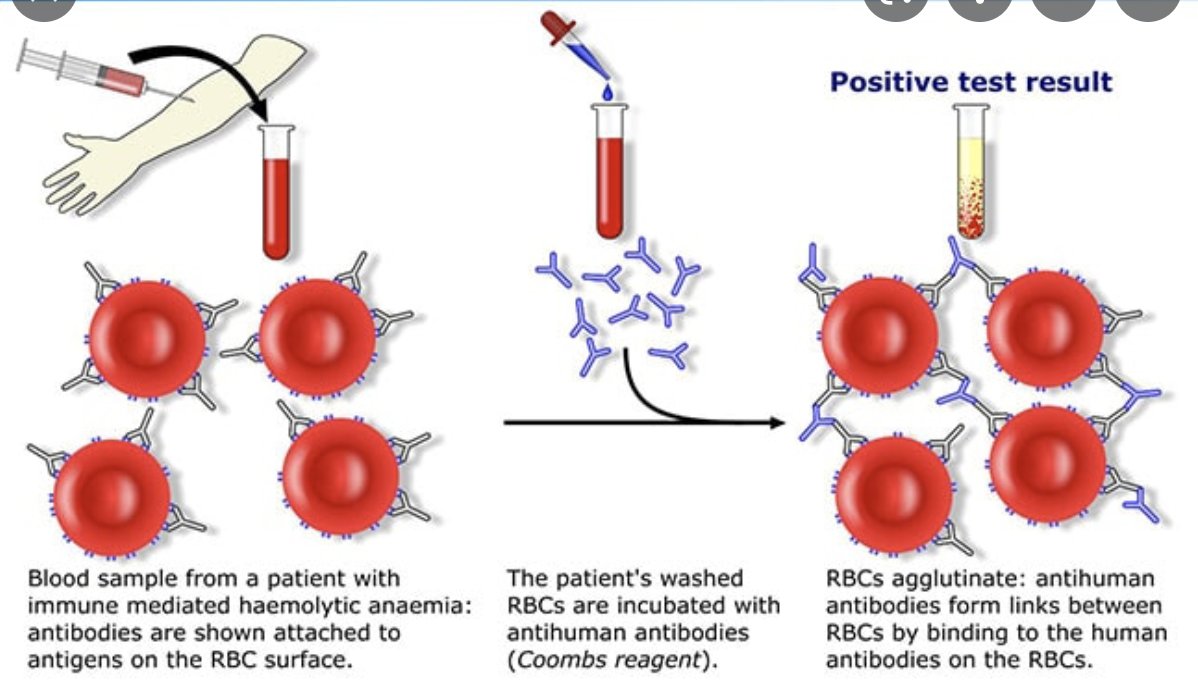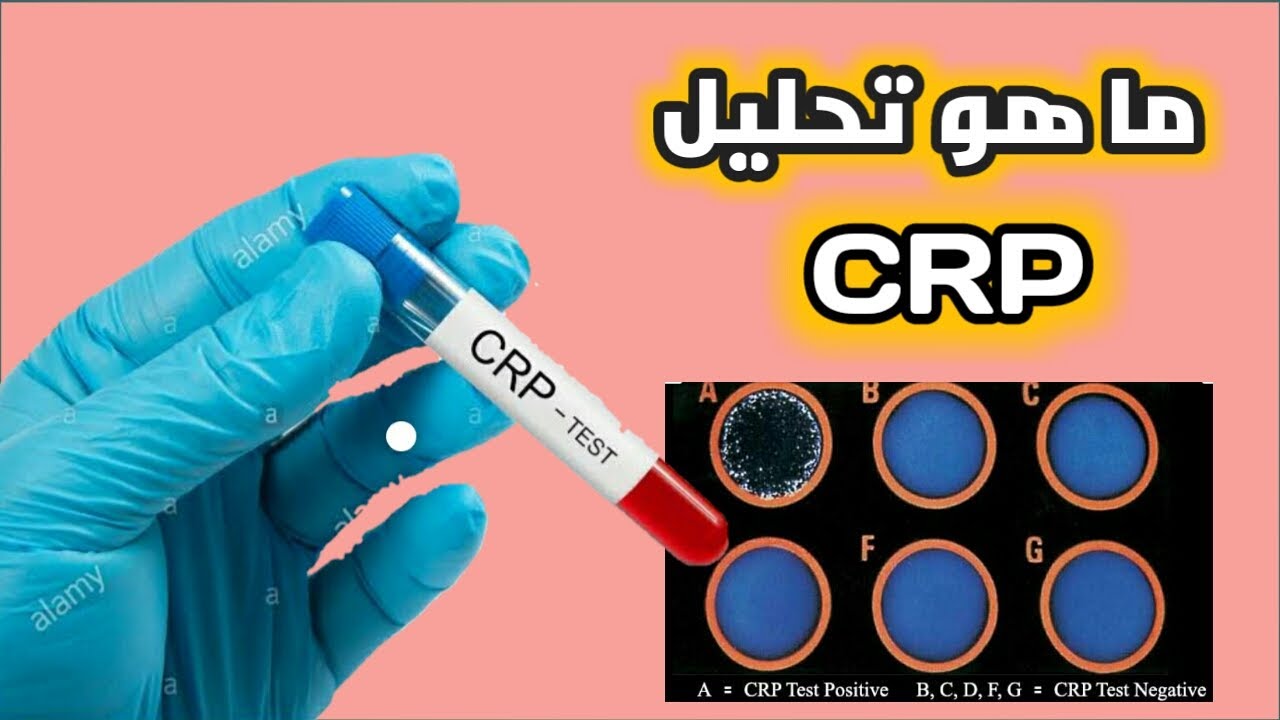Crp test positive treatment. C-Reactive Protein Test: Understanding Purpose, Procedure, and Results for Inflammation Detection
What is the purpose of a C-reactive protein test. How is the CRP test performed. What do CRP test results indicate. Can CRP levels predict heart disease risk. How are CRP test results interpreted.
The Significance of C-Reactive Protein in Inflammation Detection
C-reactive protein (CRP) is a crucial biomarker produced by the liver in response to inflammation within the body. This protein plays a vital role in helping healthcare professionals identify and monitor various inflammatory conditions, ranging from minor infections to more severe diseases like cancer or cardiovascular issues.
CRP levels in the blood can provide valuable insights into the presence and severity of inflammation, although it’s important to note that the test itself doesn’t pinpoint the exact location or cause of the inflammation. This non-specific nature of the CRP test makes it a versatile tool in medical diagnostics, but it also necessitates further investigation to determine the root cause of elevated CRP levels.
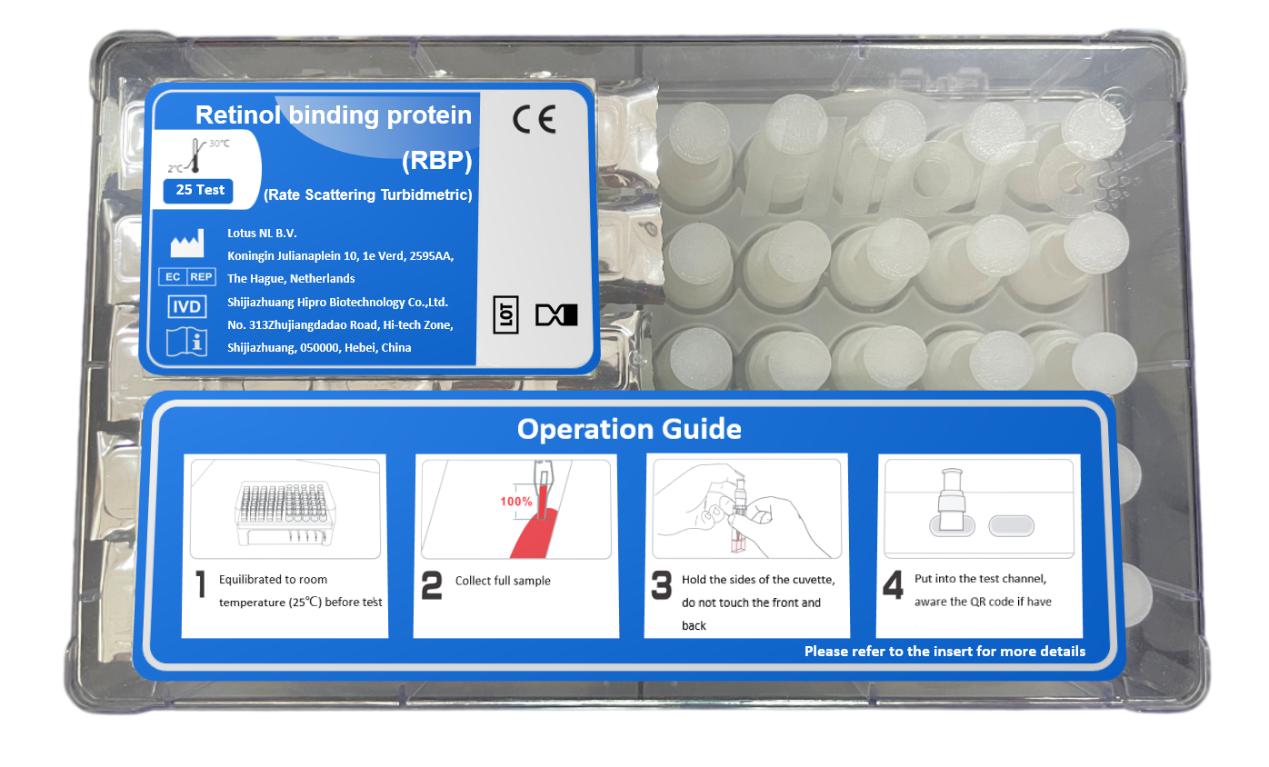
Why Do Doctors Order CRP Tests?
Healthcare providers may recommend a CRP test for several reasons:
- To detect the presence of inflammation in the body
- To monitor the progression of inflammatory conditions
- To evaluate the effectiveness of treatments for inflammatory disorders
- To assess the risk of cardiovascular disease
In cases where a patient has already been diagnosed with an inflammatory condition, regular CRP tests can help doctors track the disease’s progression and adjust treatment plans accordingly.
The CRP Test Procedure: What to Expect
Undergoing a CRP test is a relatively simple and straightforward process. The test requires a blood sample, which is typically drawn from a vein in your arm. Here’s what you can expect during the procedure:
- A healthcare professional will clean the area where the blood will be drawn with an antiseptic.
- An elastic band may be wrapped around your upper arm to make the veins more visible.
- A small needle will be inserted into the vein to collect the blood sample.
- The blood will be collected in a sterile vial or tube.
- After collection, the needle will be removed, and pressure will be applied to the site with gauze or a bandage.
The entire process usually takes just a few minutes and is associated with minimal discomfort. There’s no need for special preparation before the test, and you can eat and drink normally on the day of the procedure.

Are There Any Risks Associated with CRP Testing?
CRP testing is considered a low-risk procedure. The most common side effects are minor and may include:
- Slight bruising at the needle insertion site
- Temporary discomfort during the blood draw
- In rare cases, lightheadedness or fainting
If you have concerns about the blood draw process, don’t hesitate to discuss them with your healthcare provider. They can offer suggestions to make the experience more comfortable for you.
Interpreting CRP Test Results: What Do the Numbers Mean?
CRP test results are typically reported in milligrams per liter (mg/L) or milligrams per deciliter (mg/dL). The interpretation of these results can vary depending on the specific test used and the reason for testing. Generally, CRP levels are categorized as follows:
- Less than 1 mg/L: Low risk of inflammation or cardiovascular disease
- 1 to 3 mg/L: Moderate risk
- Greater than 3 mg/L: High risk
It’s crucial to understand that these ranges are general guidelines, and the interpretation of CRP levels should always be done in conjunction with other clinical information and under the guidance of a healthcare professional.

How Do CRP Levels Relate to Cardiovascular Risk?
In recent years, the high-sensitivity C-reactive protein (hs-CRP) test has gained attention for its potential in predicting cardiovascular risk. This test can detect lower levels of CRP than the standard test, making it more useful for assessing heart disease risk in otherwise healthy individuals.
According to the American Heart Association, individuals with hs-CRP levels of 2 mg/L or higher may require more intensive measures to prevent cardiovascular disease. However, it’s important to note that CRP levels should be considered alongside other risk factors for a comprehensive assessment of heart health.
The Difference Between Standard CRP and High-Sensitivity CRP Tests
While both tests measure the same protein, they serve different purposes in clinical practice:
- Standard CRP Test: Used to detect and monitor significant inflammation in the body, often associated with infections, autoimmune disorders, or other inflammatory conditions.
- High-Sensitivity CRP Test (hs-CRP): Designed to detect lower levels of inflammation, primarily used to assess cardiovascular risk in individuals without obvious signs of inflammation.
The choice between these tests depends on the specific clinical question being addressed. Your healthcare provider will determine which test is most appropriate based on your individual health status and risk factors.
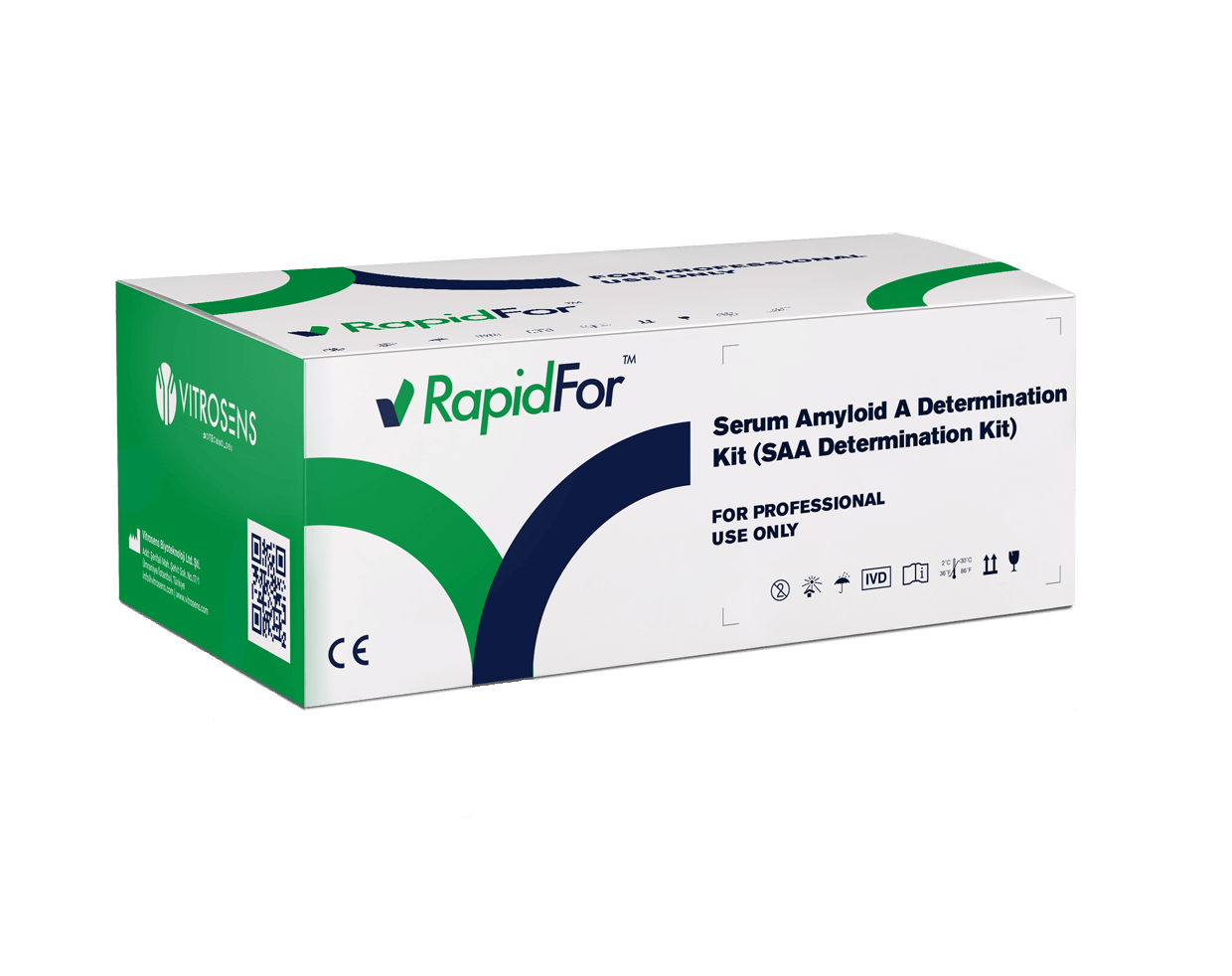
CRP and Its Role in Heart Disease Prevention
The connection between inflammation and heart disease has become increasingly clear in recent years. Chronic, low-level inflammation can contribute to the development and progression of atherosclerosis, the buildup of plaque in the arteries that can lead to heart attacks and strokes.
Elevated CRP levels, particularly as measured by the hs-CRP test, may indicate an increased risk of cardiovascular events. This information can be valuable in guiding preventive strategies and treatment decisions.
How Can CRP Levels Influence Cardiovascular Care?
Healthcare providers may use CRP levels in several ways to manage cardiovascular health:
- Risk Stratification: Identifying individuals who may benefit from more aggressive preventive measures
- Treatment Monitoring: Assessing the effectiveness of interventions aimed at reducing cardiovascular risk
- Post-Event Care: Guiding the intensity of follow-up care after heart attacks or cardiac procedures
It’s important to note that while CRP levels can provide valuable information, they should always be considered in conjunction with other established risk factors for heart disease.
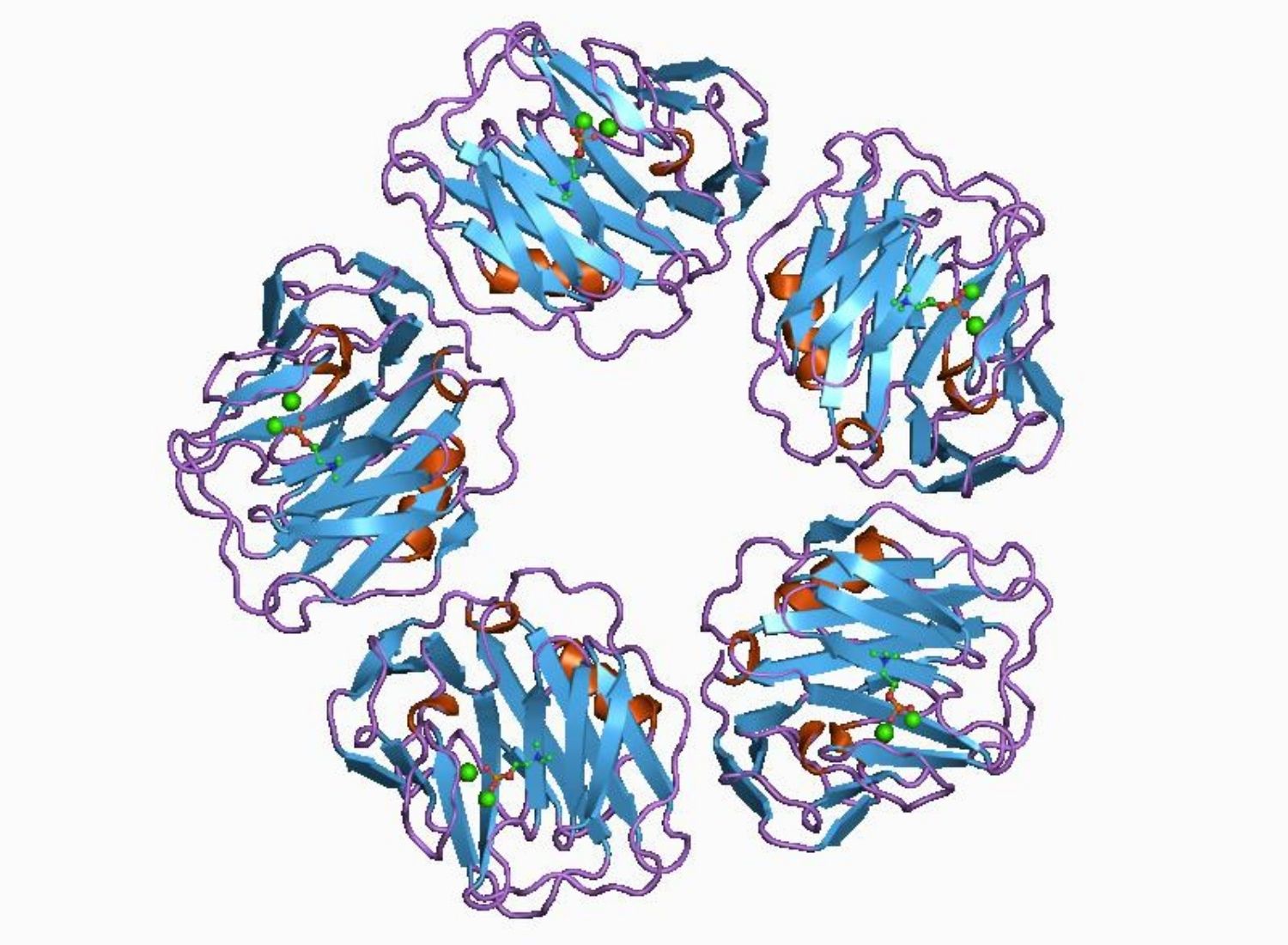
Factors That Can Influence CRP Levels
CRP levels can be affected by various factors, some of which are modifiable and others that are not. Understanding these influences can help in the interpretation of test results and guide lifestyle modifications to reduce inflammation.
Modifiable Factors Affecting CRP Levels:
- Diet: A diet high in saturated fats and refined carbohydrates may increase CRP levels
- Physical Activity: Regular exercise can help lower CRP levels
- Smoking: Tobacco use is associated with higher CRP levels
- Obesity: Excess body fat, especially visceral fat, can contribute to chronic inflammation
- Stress: Chronic stress may lead to elevated CRP levels
Non-Modifiable Factors Affecting CRP Levels:
- Age: CRP levels tend to increase with age
- Gender: Women may have slightly higher CRP levels than men
- Genetics: Some individuals may be genetically predisposed to higher CRP levels
By addressing modifiable risk factors, individuals may be able to reduce their CRP levels and, potentially, their risk of inflammatory conditions and cardiovascular disease.
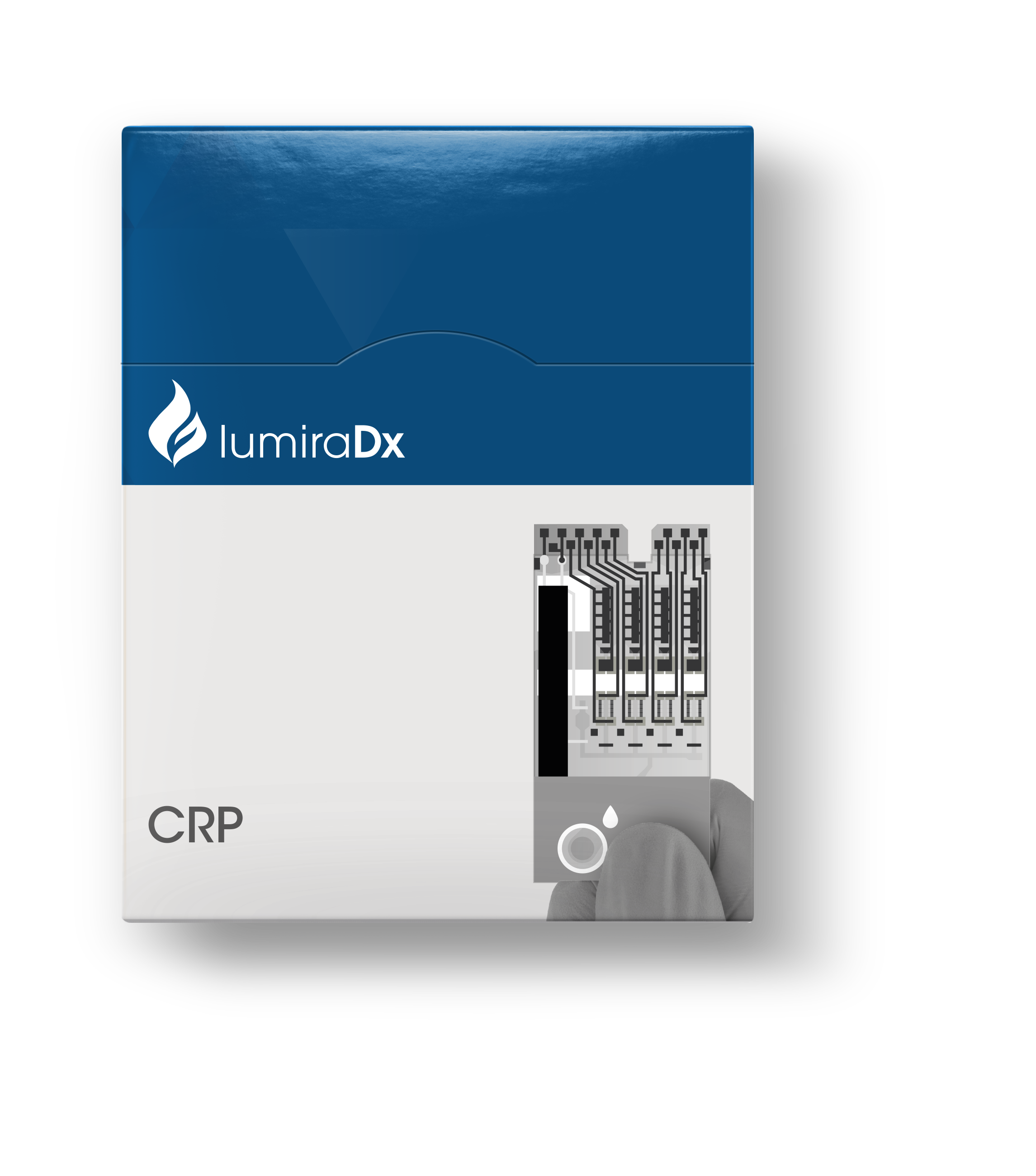
Integrating CRP Testing into Comprehensive Health Assessment
While CRP testing can provide valuable insights into inflammation and cardiovascular risk, it’s essential to view these results as part of a broader health assessment. Healthcare providers typically consider CRP levels alongside other important health indicators, including:
- Lipid Profile: Cholesterol and triglyceride levels
- Blood Pressure Readings
- Blood Glucose Levels
- Body Mass Index (BMI)
- Family History of Cardiovascular Disease
- Lifestyle Factors: Diet, exercise habits, and smoking status
By taking a comprehensive approach, healthcare providers can develop more accurate risk assessments and tailored treatment plans for their patients.
How Often Should CRP Levels Be Tested?
The frequency of CRP testing depends on individual circumstances and the reason for testing. For those being monitored for inflammatory conditions, CRP levels may be checked regularly as part of ongoing disease management. In the context of cardiovascular risk assessment, the optimal frequency of testing is less clear and may vary based on individual risk factors and clinical judgment.
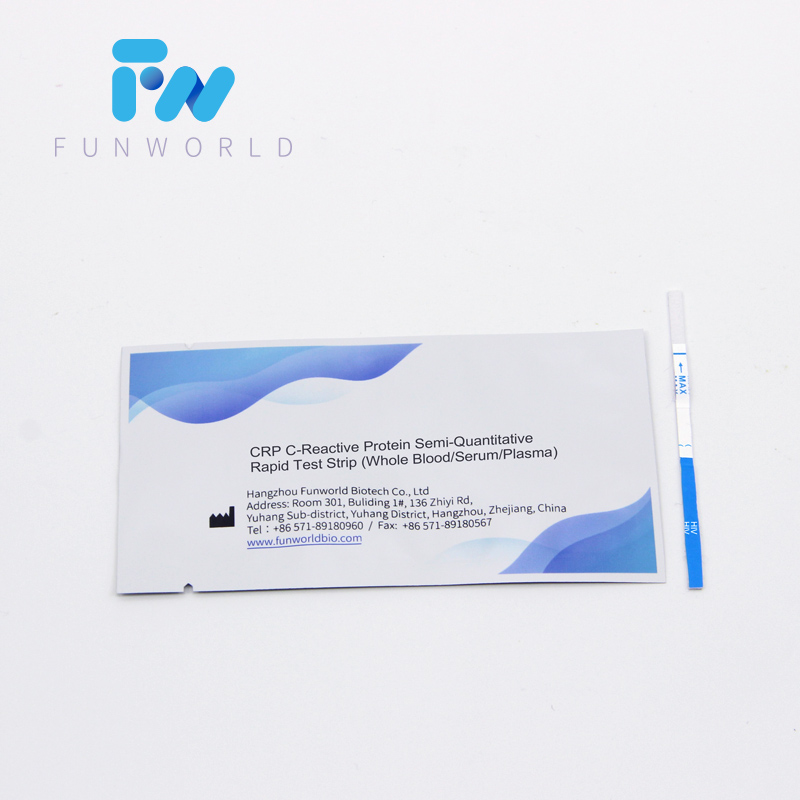
It’s important to discuss the appropriate testing schedule with your healthcare provider, as they can take into account your personal health history and risk factors to determine the most beneficial approach.
Lifestyle Modifications to Reduce Inflammation and Lower CRP Levels
For individuals with elevated CRP levels, certain lifestyle changes may help reduce inflammation and improve overall health. These modifications can be beneficial regardless of whether the elevated CRP is related to cardiovascular risk or other inflammatory conditions.
Dietary Changes to Combat Inflammation:
- Increase consumption of fruits, vegetables, and whole grains
- Choose lean proteins and fish rich in omega-3 fatty acids
- Limit intake of processed foods, saturated fats, and added sugars
- Consider incorporating anti-inflammatory herbs and spices like turmeric and ginger
Physical Activity and Exercise:
Regular physical activity has been shown to have anti-inflammatory effects and can help lower CRP levels. Aim for at least 150 minutes of moderate-intensity aerobic exercise or 75 minutes of vigorous-intensity aerobic exercise per week, along with muscle-strengthening activities at least twice a week.
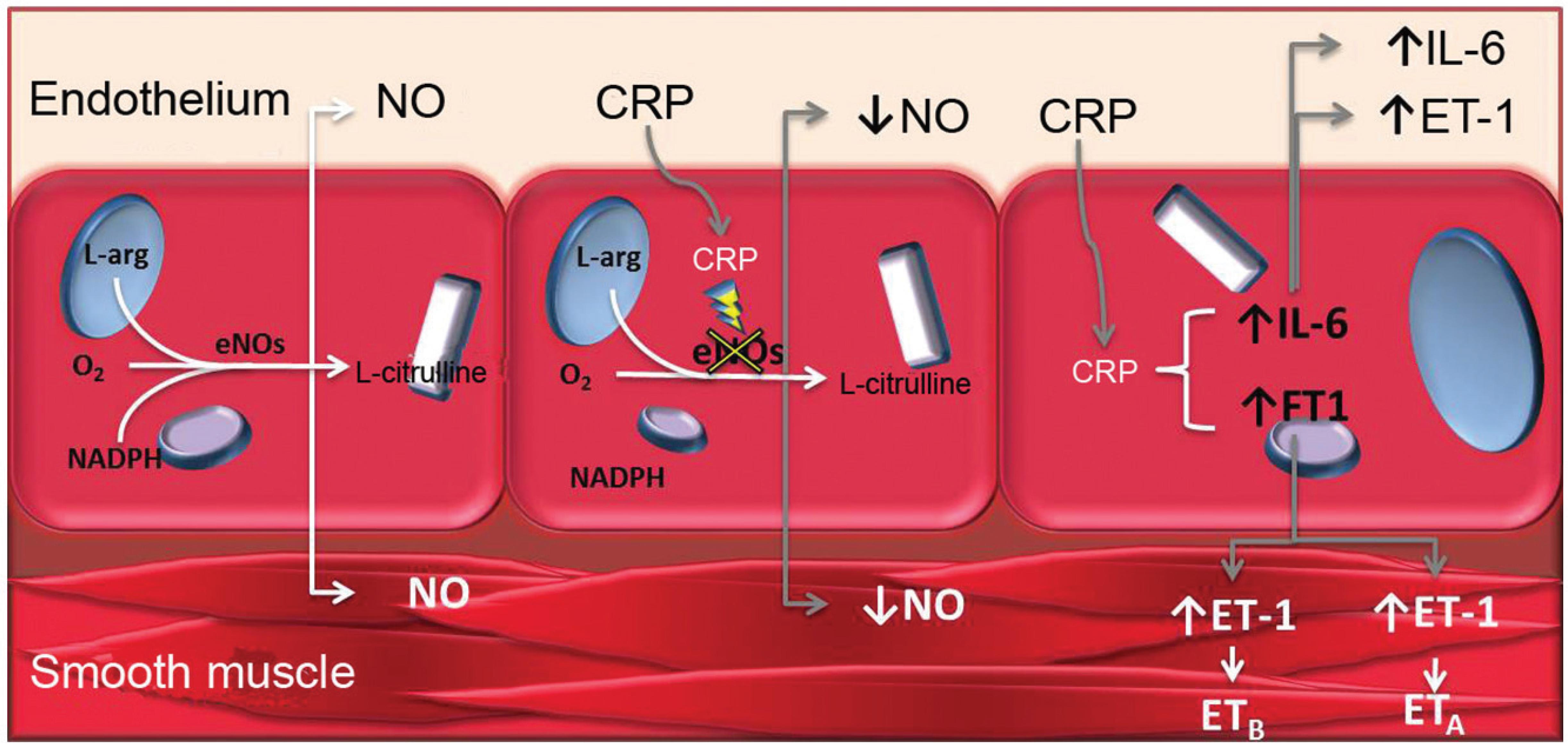
Stress Management Techniques:
Chronic stress can contribute to inflammation. Incorporating stress-reduction techniques such as meditation, yoga, or deep breathing exercises may help lower CRP levels and improve overall well-being.
Weight Management:
Maintaining a healthy weight is crucial for reducing inflammation. Even modest weight loss in overweight or obese individuals can lead to significant reductions in CRP levels.
Smoking Cessation:
Quitting smoking can have immediate and long-term benefits on inflammation levels and overall health. If you smoke, talk to your healthcare provider about strategies to quit.
By implementing these lifestyle changes, individuals may be able to reduce their CRP levels naturally and improve their overall health profile. However, it’s important to work closely with a healthcare provider to develop a personalized plan that addresses individual health needs and risk factors.
The Future of CRP Testing in Personalized Medicine
As our understanding of the role of inflammation in various diseases continues to evolve, CRP testing is likely to play an increasingly important role in personalized medicine. Researchers are exploring new ways to use CRP and other inflammatory markers to tailor prevention strategies and treatment approaches to individual patients.
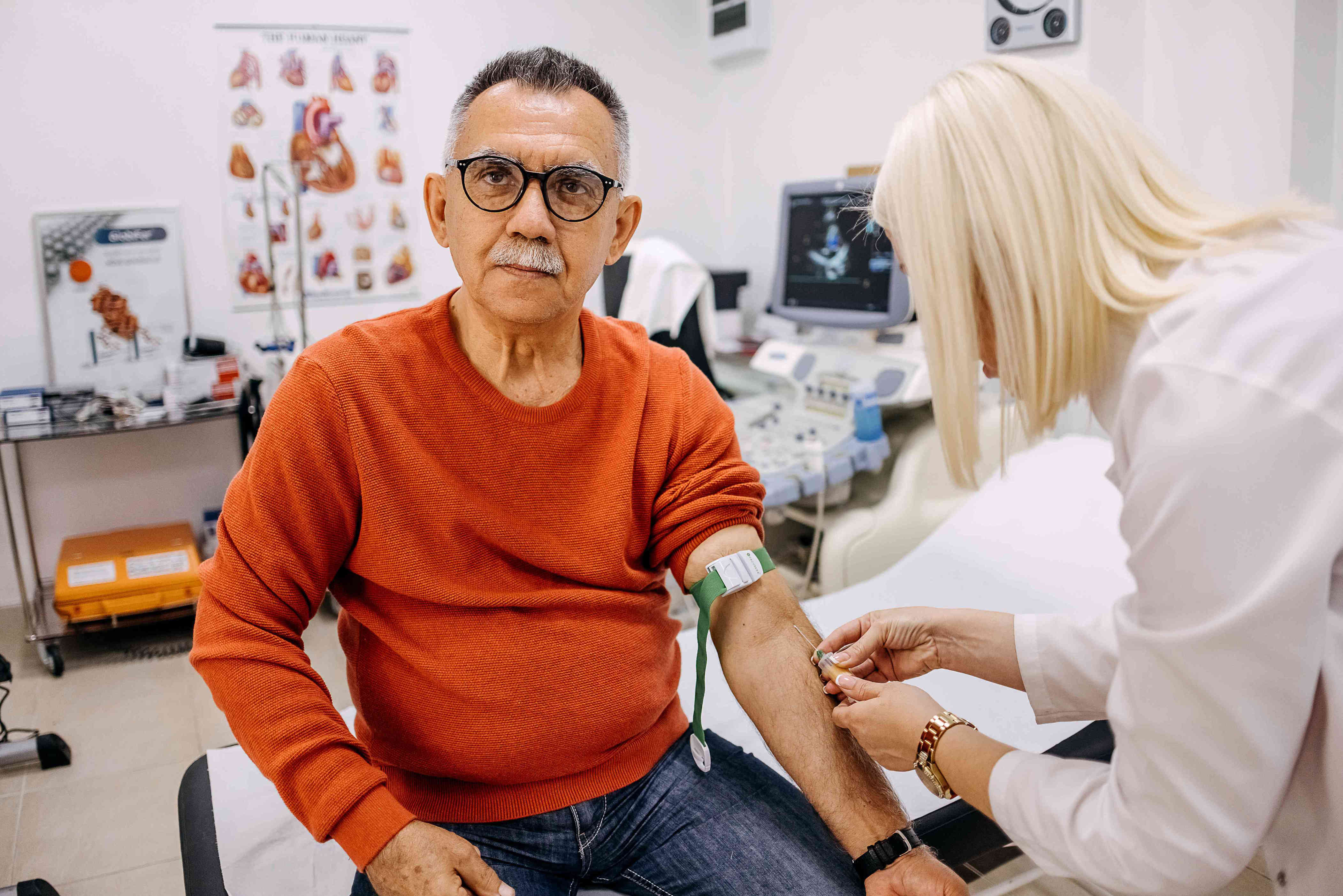
Emerging Research and Potential Applications:
- Predictive Modeling: Combining CRP levels with genetic markers and other biomarkers to create more accurate risk prediction models for various diseases
- Treatment Selection: Using CRP levels to guide the choice of medication or intervention in certain conditions, such as rheumatoid arthritis or cardiovascular disease
- Monitoring Treatment Response: Utilizing CRP trends to assess the effectiveness of anti-inflammatory therapies and adjust treatment plans accordingly
- Early Disease Detection: Exploring the potential of CRP testing in identifying early stages of inflammatory conditions before clinical symptoms appear
As research in this area progresses, we may see more sophisticated and targeted applications of CRP testing in clinical practice, leading to more personalized and effective healthcare strategies.
Challenges and Limitations of CRP Testing:
While CRP testing offers valuable insights, it’s important to acknowledge its limitations:

- Non-Specificity: Elevated CRP levels indicate inflammation but don’t pinpoint its cause or location
- Variability: CRP levels can fluctuate due to various factors, including acute illnesses or injuries
- Interpretation Complexity: CRP results must be considered in the context of other clinical information for accurate interpretation
- Cost Considerations: Frequent testing may have financial implications for patients and healthcare systems
Addressing these challenges will be crucial as researchers and clinicians work to refine the use of CRP testing in various medical contexts.
In conclusion, C-reactive protein testing has emerged as a valuable tool in assessing inflammation and cardiovascular risk. By providing insights into the body’s inflammatory status, CRP tests can help guide prevention strategies, treatment decisions, and overall health management. As our understanding of inflammation’s role in health and disease continues to grow, CRP testing is likely to remain an important component of comprehensive medical care, contributing to more personalized and effective healthcare approaches.

C-Reactive Protein Test: Purpose, Procedure, and Results
We include products we think are useful for our readers. If you buy through links on this page, we may earn a small commission Here’s our process.
Healthline only shows you brands and products that we stand behind.
Our team thoroughly researches and evaluates the recommendations we make on our site. To establish that the product manufacturers addressed safety and efficacy standards, we:
- Evaluate ingredients and composition: Do they have the potential to cause harm?
- Fact-check all health claims: Do they align with the current body of scientific evidence?
- Assess the brand: Does it operate with integrity and adhere to industry best practices?
We do the research so you can find trusted products for your health and wellness.
Read more about our vetting process.
Was this helpful?
A doctor may order a C-reaction protein test if they suspect you have an inflammatory disorder, such as arthritis. Your doctor may also use this test to monitor treatment if you’ve been diagnosed with an inflammatory disorder.
Your doctor may also use this test to monitor treatment if you’ve been diagnosed with an inflammatory disorder.
C-reactive protein (CRP) is a substance the liver produces in response to inflammation.
A high level of CRP in the blood can be a marker of inflammation. A wide variety of conditions can cause it, from an infection to cancer.
High CRP levels can also indicate that there’s inflammation in the arteries of the heart, which can mean a higher risk of heart attack.
However, the CRP test is an extremely nonspecific test. CRP levels can be elevated in many inflammatory conditions.
If your doctor suspects you may have an inflammatory disorder (like arthritis, cancer, an infection, etc.), they may order a C-reaction protein test. This test can show there’s a high level of inflammation, but it does not show where the inflammation is located or what might be causing it.
If you have a previously diagnosed inflammatory issue, your doctor may also order this test occasionally to see how your treatment is working, and if the issue is being properly managed.
It’s important to note that ahigh-sensitivity C-reactive protein (hs-CRP) test is a slightly different test than a regular C-reaction protein test. This test typically predicts heart disease and stroke.
While the regular C-reactive test can help uncover different diseases that cause inflammation by measuring high levels of protein, the hs-CRP test measures lower (but still elevated) levels of protein, which can signal the risk of heart disease and stroke.
Your doctor may order a hs-CRP if they’re focusing on cardiovascular issues.
CRP and heart disease
Expert opinion from the American Heart Association in 2019 states that when considering all risk factors, people with CRP levels greater than or equal to 2 milligrams per liter (mg/L) may need more intense measures to prevent cardiovascular disease.
Elevated levels of CRP may have an important role in identifying people who might need closer follow-up or more intensive treatment after heart attacks or heart procedures.
CRP levels may also be useful in identifying people at risk of heart disease when cholesterol levels alone may not be helpful.
The Centers for Disease Control and Prevention (CDC) considers the following as significant risk factors for developing heart disease:
- diabetes
- high blood pressure
- high cholesterol
- smoking
- a diet low in nutrients and higher in fat and refined carbs
- physical inactivity
- heavy alcohol use
- overweight and obesity
A family history of heart disease can also put you at a higher risk of heart disease.
No special preparation is necessary for this test. You may eat normally on the day of, and the test can happen at any time of day.
This test is done via a blood sample, so there will be a small needle involved.
A nurse or other healthcare professional will draw blood from a vein, usually on the inside of your elbow or the back of your hand.
First, they clean the skin over the vein with antiseptic. Next, they wrap an elastic band around your arm, causing your veins to bulge out slightly. The healthcare professional then inserts a small needle into the vein and collects your blood in a sterile vial.
Next, they wrap an elastic band around your arm, causing your veins to bulge out slightly. The healthcare professional then inserts a small needle into the vein and collects your blood in a sterile vial.
After the healthcare professional collects your blood sample, they remove the elastic band around your arm and ask you to apply pressure to the puncture site with gauze. They may use tape or a bandage to hold the gauze in place.
Are there risks with the test?
There are no risks associated with this test other than routine issues that can occur with any blood test. The main issues include:
- a slight pinch when the needle is inserted
- slight bruising at needle insertion site
If you’re nervous around needles or blood, talk with the healthcare professional administering the test about ways to make it more comfortable for you.
In general, the results of your test will be measured in either mg/dL or mg/L.
Your doctor will most likely explain the results of your test to you, but in general:
- A typical result: Less than 10 mg/L
- A high result: Equal to or greater than 10 mg/L
According to a 2003 study by the American Heart Association, people with a higher level of CRP were two to three times more likely to have a heart attack than people with lower levels of CRP.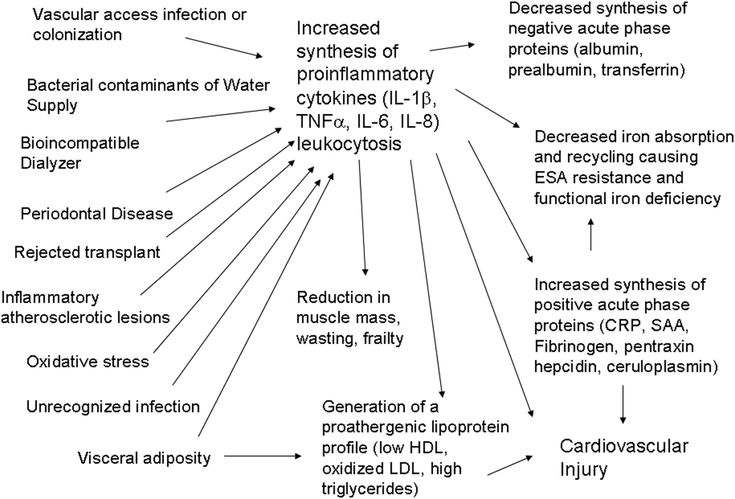
A small study from 2013 evaluated 100 people with cardiovascular risk factors. Researchers found that a CRP level over 10 mg/L was connected to a 4 percent risk of developing a fatal cardiovascular disease in 10 years.
If your doctor believes you may be at risk of heart disease or stroke, they may order a hs-CRP blood test alongside other tests.
Additionally, there’s more recent research that suggests CRP may be used as a predictor of health outcomes related to chronic obstructive pulmonary disease (COPD).
If your doctor is concerned you are dealing with the symptoms of other inflammatory conditions besides cardiovascular issues, they may order a regular CRP test to diagnose, among other things:
- inflammatory bowel disease (IBD)
- rheumatoid arthritis
- lupus
Lowering your CRP isn’t a guaranteed way to lower your risk of cardiovascular or autoimmune disease.
It’s important to know that high CRP is what doctors call a biomarker.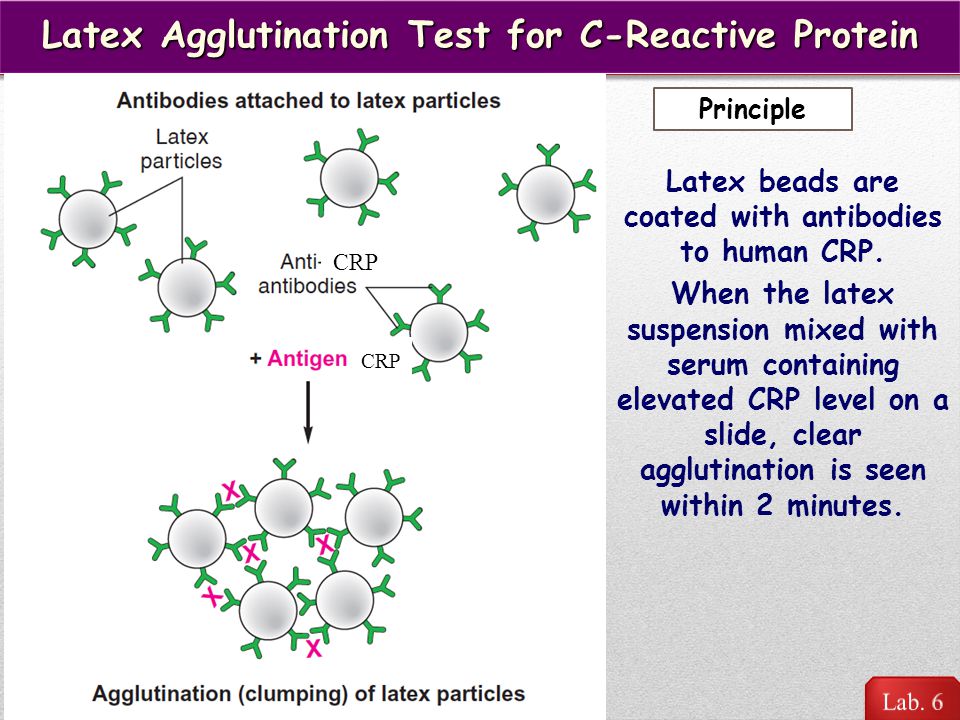 A biomarker is a factor to keep in mind when analyzing a person’s health, but not a stand-alone indicator of a particular diagnosis.
A biomarker is a factor to keep in mind when analyzing a person’s health, but not a stand-alone indicator of a particular diagnosis.
A 2015 study indicates that eating a nutritious, balanced diet — including lots of fruits, vegetables, and fiber — may help lower your CRP concentration.
If you’re at high risk of cardiovascular disease and your test results show high CRP, your doctor may suggest a statin or other cholesterol-lowering medication.
Vitamin C has also been explored as a way to lower CRP levels for people who have an elevated risk of cardiovascular disease.
A 2017 research review suggests that probiotics may also have a positive effect in lowering CRP.
However, more studies have to be done for each method before any definitive claims can be made.
C-reactive protein (CRP) is a substance the liver produces in response to inflammation.
If your doctor suspects you may have a high level of inflammation, they may order a CRP blood test as one way to identify the underlying cause of that inflammation.
While a CRP blood test can’t say what exactly is causing your inflammation, your doctor may be able to use it to help them diagnose your issue.
Sometimes a high CRP measurement can be a risk factor for cardiovascular disease.
If you’ve recently noticed changes in your body that aren’t going away and causing you discomfort, talk with your doctor about your symptoms. A CRP blood test may be one of the tests your doctor decides to order.
Vitamin C treatment reduces elevated C-reactive protein
1. Libby P. Inflammation in atherosclerosis. Nature. 2002;420:868–874. [PubMed] [Google Scholar]
2. de Ferranti SD, Rifai N. C-reactive protein: a nontraditional serum marker of cardiovascular risk. Cardiovasc Pathol. 2007;16:14–21. [PubMed] [Google Scholar]
3. Ridker PM, Cushman M, Stampfer MJ, Tracy RP, Hennekens CH. Inflammation, aspirin, and the risk of cardiovascular disease in apparently healthy men. N Engl J Med. 1997;336:973–979. [PubMed] [Google Scholar]
4. Ridker PM, Cannon CP, Morrow D, Rifai N, Rose LM, McCabe CH, Pfeffer MA, Braunwald E. Pravastatin or Atorvastatin Evaluation and Infection Therapy-Thrombolysis in Myocardial Infarction 22 (PROVE IT-TIMI 22) Investigators. C-reactive protein levels and outcomes after statin therapy. N Engl J Med. 2005;352:20–28. [PubMed] [Google Scholar]
Ridker PM, Cannon CP, Morrow D, Rifai N, Rose LM, McCabe CH, Pfeffer MA, Braunwald E. Pravastatin or Atorvastatin Evaluation and Infection Therapy-Thrombolysis in Myocardial Infarction 22 (PROVE IT-TIMI 22) Investigators. C-reactive protein levels and outcomes after statin therapy. N Engl J Med. 2005;352:20–28. [PubMed] [Google Scholar]
5. Ridker PM, Rifai N, Pfeffer MA, Sacks FM, Moye LA, Goldman S, Flaker GC, Braunwald E. Inflammation, pravastatin, and the risk of coronary events after myocardial infarction in patients with average cholesterol levels. Cholesterol and Recurrent Events (CARE) Investigators. Circulation. 1998;98:839–844. [PubMed] [Google Scholar]
6. Packard CJ, O’reilly DS, Caslake MJ, McMahon AD, Ford I, Cooney J, Macphee CH, Suckling KE, Krishna M, Wilkinson FE, Rumley A, Lowe GDO. Lipoprotein-associated phospholipase A2 as an independent predictor of coronary heart disease. West of Scotland Coronary Prevention Study Group. N Engl J Med. 2000;343:1148–1155. [PubMed] [Google Scholar]
[PubMed] [Google Scholar]
7. Ridker PM, Rifai N, Clearfield M, Downs JR, Weis SE, Miles JS, Gotto AM. Measurement of C-reactive protein for the targeting of statin therapy in the primary prevention of acute coronary events. N Engl J Med. 2001;344:1959–1965. [PubMed] [Google Scholar]
8. Nissen SE, Tuzcu EM, Schoenhagen P, Crowe T, Sasiela WJ, Tsai J, Orazem J, Magorien RD, O’Shaughnessy C, Ganz P. Statin therapy, LDL cholesterol, C-reactive protein, and coronary artery disease. N Engl J Med. 2005;352:29–38. [PubMed] [Google Scholar]
9. Torzewski M, Rist C, Mortensen RF, Zwaka TP, Bienek M, Waltenberger J, Koenig W, Schmitz G, Hombach V, Torzewski J. C-reactive protein in the arterial intima: role of C-reactive protein receptor-dependent monocyte recruitment in atherogenesis. Arterioscler Thromb Vasc Biol. 2000;20:2094–2099. [PubMed] [Google Scholar]
10. Pasceri V, Willerson JT, Yeh ET. Direct proinflammatory effect of C-reactive protein on human endothelial cells. Circulation. 2000;102:2165–2168. [PubMed] [Google Scholar]
Circulation. 2000;102:2165–2168. [PubMed] [Google Scholar]
11. Venugopal SK, Devaraj S, Yuhanna I, Shaul P, Jialal I. Demonstration that C-reactive protein decreases eNOS expression and bioactivity in human aortic endothelial cells. Circulation. 2002;106:1439–1441. [PubMed] [Google Scholar]
12. Liu C, Wang S, Deb A, Nath KA, Katusic ZS, McConnell JP, Caplice NM. Proapoptotic, antimigratory, antiproliferative, and antiangiogenic effects of commercial C-reactive protein on various human endothelial cell types in vitro: implications of contaminating presence of sodium azide in commercial preparation. Circ Res. 2005;97:135–143. [PubMed] [Google Scholar]
13. Singh U, Devaraj S, Jialal I. C-reactive protein decreases tissue plasminogen activator activity in human aortic endothelial cells: evidence that C-reactive protein is a procoagulant. Arterioscler Thromb Vasc Biol. 2005;25:2216–2221. [PubMed] [Google Scholar]
14. Paul A, Ko KW, Li L, Yechoor V, McCrory MA, Szalai AJ, Chan L. C-reactive protein accelerates the progression of atherosclerosis in apolipoprotein E-deficient mice. Circulation. 2004;109:647–655. [PubMed] [Google Scholar]
C-reactive protein accelerates the progression of atherosclerosis in apolipoprotein E-deficient mice. Circulation. 2004;109:647–655. [PubMed] [Google Scholar]
15. Trion A, de Maat MP, Jukema JW, van der Laarse A, Maas MC, Offerman EH, Havekes LM, Szalai AJ, Princen HMG, Emeis JJ. No effect of C-reactive protein on early atherosclerosis development in apolipoprotein E*3-Leiden/human C-reactive protein transgenic mice. Arterioscler Thromb Vasc Biol. 2005;25:1635–1640. [PubMed] [Google Scholar]
16. Reifenberg K, Lehr HA, Baskal D, Wiese E, Schaefer SC, Black S, Samols D, Torzewski M, Lackner KJ, Husmann M, Blettner M, Bhakdi S. Role of C-reactive protein in atherogenesis: can the apolipoprotein E knockout mouse provide the answer? Arterioscler Thromb Vasc Biol. 2005;25:1641–1646. [PubMed] [Google Scholar]
17. Pearson TA, Mensah GA, Alexander RW, Anderson JL, Cannon ROIII, Criqui M, Fadl YY, Fortmann SP, Hong Y, Myers GL, Rifai N, Smith SC, Jr, Taubert K, Tracy RP, Vinicor F.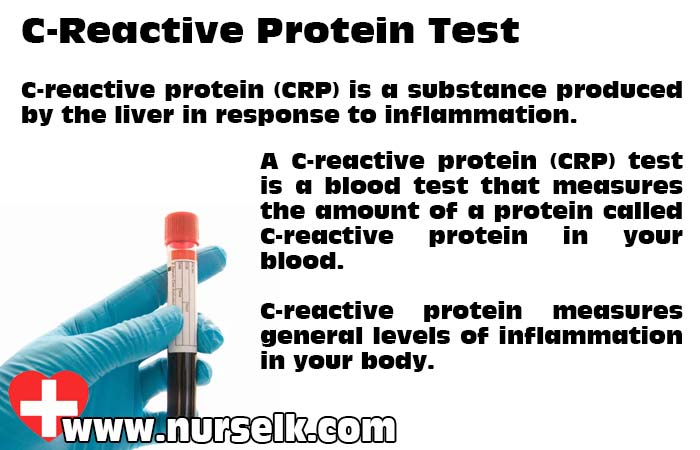 Centers for Disease Control and Prevention; American Heart Association. Markers of inflammation and cardiovascular disease: application to clinical and public health practice: a statement for healthcare professionals from the Centers for Disease Control and Prevention and the American Heart Association. Circulation. 2003;107:499–511. [PubMed] [Google Scholar]
Centers for Disease Control and Prevention; American Heart Association. Markers of inflammation and cardiovascular disease: application to clinical and public health practice: a statement for healthcare professionals from the Centers for Disease Control and Prevention and the American Heart Association. Circulation. 2003;107:499–511. [PubMed] [Google Scholar]
18. Sabatine MS, Morrow DA, Jablonski KA, Rice MM, Warnica JW, Domanski MJ, Hsia J, Gersh BJ, Rifai N, Ridker PM, Pfeffer MA, Braunwald E PEACE Investigators. Prognostic significance of the Centers for Disease Control/American Heart Association high-sensitivity C-reactive protein cut points for cardiovascular and other outcomes in patients with stable coronary artery disease. Circulation. 2007;115:1528–1536. [PubMed] [Google Scholar]
19. Block G, Dietrich M, Norkus EP, Morrow JD, Hudes M, Caan B, Packer L. Factors associated with oxidative stress in human populations. Am J Epidemiol. 2002;156:274–285. [PubMed] [Google Scholar]
20. Scholz H, Yndestad A, Damas JK, Waehre T, Tonstad S, Aukrust P, Halvorsen B. 8-isoprostane increases expression of interleukin-8 in human macrophages through activation of mitogen-activated protein kinases. Cardiovasc Res. 2003;59:945–954. [PubMed] [Google Scholar]
Scholz H, Yndestad A, Damas JK, Waehre T, Tonstad S, Aukrust P, Halvorsen B. 8-isoprostane increases expression of interleukin-8 in human macrophages through activation of mitogen-activated protein kinases. Cardiovasc Res. 2003;59:945–954. [PubMed] [Google Scholar]
21. Block G, Jensen CD, Morrow JD, Holland N, Norkus EP, Milne GE, Hudes M, Dalvi TB, Crawford PB, Fung EB, Schumacher L, Harmatz P. The effect of vitamins C and E on biomarkers of oxidative stress depends on baseline level. Free Radic Biol Med. 2008;45:377–384. [PMC free article] [PubMed] [Google Scholar]
22. Block G, Jensen C, Dietrich M, Norkus EP, Hudes M, Packer L. Plasma C-reactive protein concentrations in active and passive smokers: influence of antioxidant supplementation. J Am Coll Nutr. 2004;23:141–7. [PubMed] [Google Scholar]
23. Church TS, Earnest CP, Wood KA, Kampert JB. Reduction of C-reactive protein levels through use of a multivitamin. Am J Med. 2003;115:702–707. [PubMed] [Google Scholar]
24. The practical guide to the identification, evaluation, and treatment of overweight and obesity in adults. National Heart, Lung, and Blood Institute, no. 00–4084, 2000. ( http://www.nhlbi.nih.gov/guidelines/obesity/prctgd_b.pdf).
The practical guide to the identification, evaluation, and treatment of overweight and obesity in adults. National Heart, Lung, and Blood Institute, no. 00–4084, 2000. ( http://www.nhlbi.nih.gov/guidelines/obesity/prctgd_b.pdf).
25. National Center for Health Statistics. Hyattsville, MD: 2007. Laboratory Methods of the National Health and Nutrition Examination Survey, 2001–2002. ( http://www.cdc.gov/nchs/about/major/nhanes/lab_methods01_02.htm) [Google Scholar]
26. Bachorik PS, Kwiterovich PO. The measurement of plasma cholesterol, low density lipoprotein- and high density lipoprotein-cholesterol. In: Hommes FA, editor. Techniques in diagnostic human biochemical genetics: A laboratory manual. New York, NY: Wiley-Liss, Inc; 1991. pp. 425–439. [Google Scholar]
27. Sowell AL, Huff DL, Yeager PR, Caudill SP, Gunter EW. Retinol, α-tocopherol, lutein/zeaxanthin, β-cryptoxanthin, lycopene, α-carotene, trans β-carotene and four retinyl esters in serum determined simultaneously by reversed-phase HPLC with multiwavelength detection. Clin Chem. 1994;40:411–416. [PubMed] [Google Scholar]
Clin Chem. 1994;40:411–416. [PubMed] [Google Scholar]
28. Gunter EW, Turner WE, Neese JW, Bayse DD. Laboratory procedures used by the Clinical Chemistry Division, Centers for Disease Control, for the Second Health and Nutrition Examination Survey (NHANES II) 1976–1980. Centers for Disease Control; 1981. [Google Scholar]
29. Sauberlich HE, Kretsch MJ, Taylor PC, Johnson HL, Skala JH. Ascorbic acid and erythorbic acid metabolism in nonpregnant women. Am J Clin Nutr. 1989;50:1039–1049. [PubMed] [Google Scholar]
30. Ford ES. Body mass index, diabetes, and C-reactive protein among U.S. adults. Diabetes Care. 1999;22:1971–1977. [PubMed] [Google Scholar]
31. Blumberg JB, Frei B. Why clinical trials of vitamin E and cardiovascular diseases may be fatally flawed. Commentary on “The relationship between dose of vitamin E and suppression of oxidative stress in humans” Free Radic Biol Med. 2007;43:1374–1376. [PubMed] [Google Scholar]
32. Meagher EA, Barry OP, Lawson JA, Rokach J, FitzGerald GA. Effects of vitamin E on lipid peroxidation in healthy persons. JAMA. 2001;285:1178–1182. [PubMed] [Google Scholar]
Effects of vitamin E on lipid peroxidation in healthy persons. JAMA. 2001;285:1178–1182. [PubMed] [Google Scholar]
33. Baumann H, Goldie J. The acute phase response. Immunol Today. 1994;15:74–80. [PubMed] [Google Scholar]
34. Hartel C, Strunk T, Bucsky P, Schultz C. Effects of vitamin C on intracytoplasmic cytokine production in human whole blood monocytes and lymphocytes. Cytokine. 2004;27:101–106. [PubMed] [Google Scholar]
35. Baeuerle PA, Henkel T. Function and activation of NFκB in the immune system. Annu Rev Immunol. 1994;12:141–179. [PubMed] [Google Scholar]
36. Bowie AG, O’Neill LAJ. Vitamin C inhibits NF-κB activation by TNF via the activation of p38 mitogen-activated protein kinase. J Immunol. 2000;165:7180–7188. [PubMed] [Google Scholar]
37. Carcamo M, Pedraza A, Borquez-Ojeda O, Golde DW. Vitamin C suppresses TNFα-induced NFκB activation by inhibiting IκBα phosphorylation. Biochemistry. 2002;41:12995–13002. [PubMed] [Google Scholar]
38. Campbell JD, Cole M, Bunditrutavorn B, Vella AT. Ascorbic acid is a potent inhibitor of various forms of T cell apoptosis. Cell Immunol. 1999;194:1–5. [PubMed] [Google Scholar]
Ascorbic acid is a potent inhibitor of various forms of T cell apoptosis. Cell Immunol. 1999;194:1–5. [PubMed] [Google Scholar]
39. Perez-Cruz I, Carcamo JM, Golde DW. Vitamin C inhibits FAS-induced apoptosis in monocytes and U937 cells. Blood. 2003;102:336–343. [PubMed] [Google Scholar]
40. Dietrich M, Block G, Hudes M, Morrow JD, Norkus EP, Traber MG, Cross CE, Packer L. Antioxidant supplementation decreases lipid peroxidation biomarker F(2)-isoprostanes in plasma of smokers. Cancer Epidemiol Biomarkers Prev. 2002;11:7–13. [PubMed] [Google Scholar]
41. Upritchard JE, Sutherland WHF, Mann JI. Effect of supplementation with tomato juice, vitamin E, and vitamin C on LDL oxidation and products of inflammatory activity in type 2 diabetes. Diabetes Care. 2000;23:733–738. [PubMed] [Google Scholar]
42. Devaraj S, Jialal I. Alpha tocopherol supplementation decreases serum C-reactive protein and monocyte interleukin-6 levels in normal volunteers and type 2 diabetic patients. Free Radic Biol Med. 2000;29:790–792. [PubMed] [Google Scholar]
Free Radic Biol Med. 2000;29:790–792. [PubMed] [Google Scholar]
43. Kaul N, Devaraj S, Grundy SM, Jialal I. Failure to demonstrate a major anti-inflammatory effect with alpha tocopherol supplementation (400 IU/day) in normal subjects. Am J Cardiol. 2001;87:1320–1323. [PubMed] [Google Scholar]
44. Vega-Lopez S, Kaul N, Devaraj S, Cai RY, German B, Jialal I. Supplementation with w3 polyunstaurated fatty acids and all-rac alpha-tocopherol alone and in combination failed to exert an anti-inflammatory effect in human volunteers. Metabolism. 2004;53:236–240. [PubMed] [Google Scholar]
45. Himmelfarb J, Kane J, McMonagle E, Zaltas E, Bobzin S, Boddupalli S, Phinney S, Miller G. Alpha and gamma tocopherol metabolism in healthy subjects and patients with end-stage renal disease. Kidney International. 2003;64:978–991. [PubMed] [Google Scholar]
46. Lu Q, Bjorkhem I, Wretlind B, Diczfalusy U, Henriksson P, Freyschuss A. Effect of ascorbic acid on microcirculation in patients with type II diabetes: a randomized placebo-controlled cross-over study. Clin Sci (Lond) 2005;108:507–513. [PubMed] [Google Scholar]
Clin Sci (Lond) 2005;108:507–513. [PubMed] [Google Scholar]
47. Fumeron C, Nguyen-Khoam T, Saltiel C, Kebede M, Buisson C, Drueke TB, Lacour B, Massy ZA. Effects of oral vitamin C supplementation on oxidative stress and inflammation status in haemodialysis patients. Nephrol Dial Transplant. 2005;20:1874–9. [PubMed] [Google Scholar]
48. Bruunsgaard H, Poulsen HE, Pedersen BY, Nyyssonen K, Kaikkonen J, Salonen JT. Long-term combined supplementation with α-tocopherol and vitamin C have no detectable anti-inflammatory effects in healthy men. J Nutr. 2003;133:1170–1173. [PubMed] [Google Scholar]
49. Ridker PM, Rifai N, Pfeffer MA, Sacks F, Braunwald E. Long-term effects of pravastatin on plasma concentration of C-reactive Protein. Circulation. 1999;100:230–235. [PubMed] [Google Scholar]
50. Ridker PM, Rifai N, Clearfield M, Downs JR, Weise SE, Miles JS, Gotto AM. Meaurement of C-reactive protein for the targeting of statin therapy in the primary prevention of acute coronary events.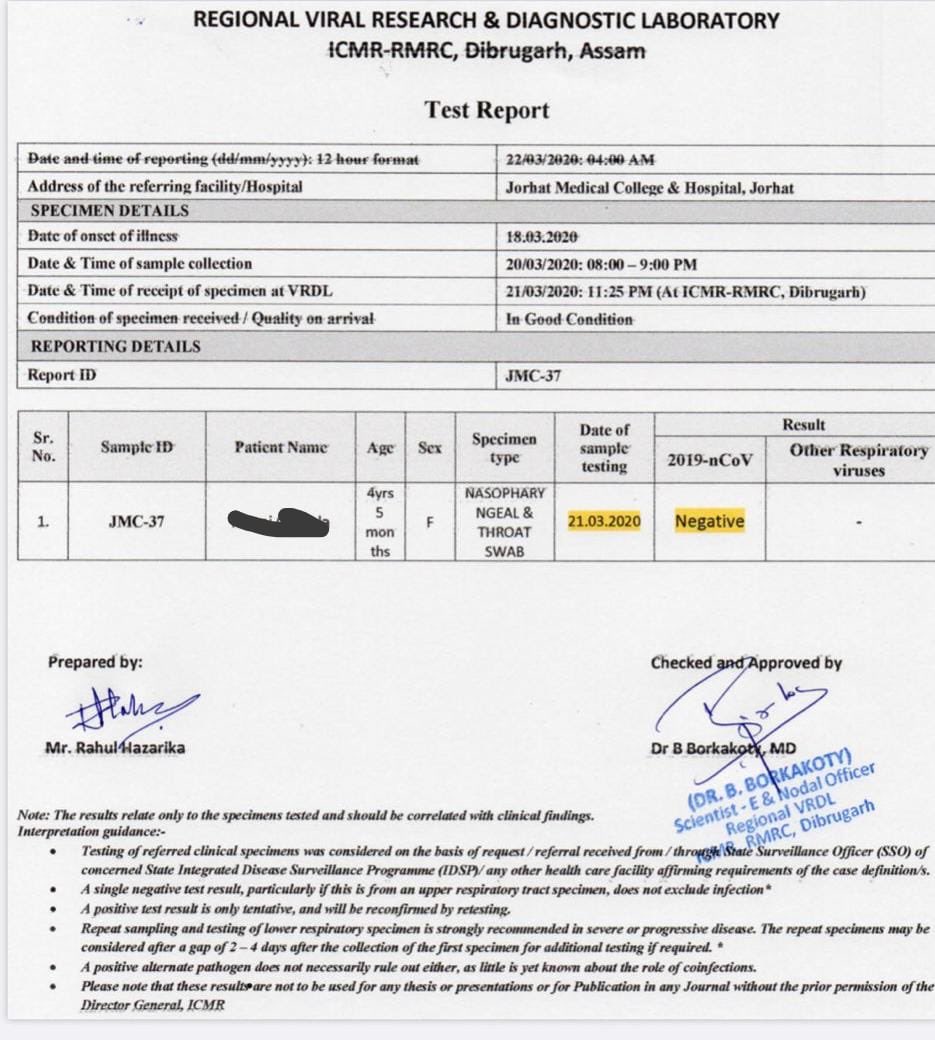 N Engl J Med. 2001;344:1959–1965. [PubMed] [Google Scholar]
N Engl J Med. 2001;344:1959–1965. [PubMed] [Google Scholar]
51. Albert MA, Danielson E, Rifai N, Ridker PM. Effect of statin therapy on C-reactive protein levels. JAMA. 2001;286:64–70. [PubMed] [Google Scholar]
52. Mora S, Ridker PM. Justification of the use of statins in primary prevention: an intervention trial evaluating rosuvastatin (JUPITER) – can C-reactive protein be used to target statin therapy in primary prevention? Am J Cardiol. 2006;97(suppl):33A–41A. [PubMed] [Google Scholar]
53. National Center for Health Statistics. Health, United States, 2004 Chartbook on Trends in the Health of Americans. Hyattsville, MD: Department of Health and Human Services; 2004. [Google Scholar]
C-reactive protein (CRP, CRP), indications for the appointment, rules for preparing for the test, interpretation of the results and normal indicators.
Confirm
More
Chicken pox
Rubella
Measles
Gout
Encephalitis
Hepatitis
Rheumatism
4301
06 October
We remind you that independent interpretation of the results is not allowed, the information below is for reference only.
C-reactive protein (CRP, CRP): indications for the appointment, rules for preparing for the test, interpretation of the results and normal indicators.
Indications for study appointment
C-reactive protein (CRP) is the most highly sensitive indicator of tissue damage during inflammation, necrosis, and trauma. In the blood of a healthy person, CRP is absent or detected in minimal amounts. It is produced mainly by liver cells (hepatocytes), as a reaction to infection pathogens entering the human body, to trauma, as well as in systemic connective tissue diseases (rheumatic diseases).
CRP stimulates immune reactions in the body, activates its defense systems and has a high correlation with the activity of the disease and the stage of the process, that is, its concentration becomes higher, the more active the inflammation (infectious or autoimmune) and the more extensive the area of tissue damage during necrosis or trauma. Therefore, C-reactive protein is called the “acute phase” protein.
Another indicator of acute inflammation is the ESR (erythrocyte sedimentation rate).
ESR (Erythrocyte Sedimentation Rate, ESR)
ESR is a nonspecific marker of inflammation.
Synonyms: Erythrocyte sedimentation reaction; ROE.
Westergren sedimentation rate; Erythrocyte Sedimentation Rate; ESR; Sed Rate; sedimentation rate.
Red…
Up to 1 business day
Available with house call
295 RUB
Add to cart
However, CRP is more informative, since its level begins to rise earlier and decrease faster (with proper treatment, CRP decreases on days 6-10, while ESR only on days 14-28). In addition, the results of ESR are influenced by the gender of the patient (for women, the ESR is higher than for men), the time of day, the number of erythrocytes, and this does not affect the CRP values. Thus, for the assessment of the inflammatory process, the analysis for C-reactive protein seems to be more justified.
The level of CRP in viral diseases increases slightly, so its significant increase in combination with elevated body temperature most likely indicates the presence of a bacterial infection.
For a short time, C-reactive protein may increase after surgery due to tissue damage, but in the absence of bacterial inflammation in the postoperative period, it quickly decreases.
Whereas the addition of a bacterial infection, whether it is a local process or sepsis, is accompanied by an increase in CRP or the absence of its decrease.
There is a highly sensitive method for determining CRP – highly sensitive C-reactive protein (cardio). The study reveals an increase in CRP with a sluggish, low degree of inflammation of the inner surface of the vascular wall, which is fraught with the formation of atherosclerotic plaques. The analysis is prescribed only in the absence of acute diseases and injuries (in which an increase in CRP is detected by the standard method). An increase in the values of highly sensitive C-reactive protein may indicate the risk of cardiovascular diseases: myocardial infarction, stroke.
Thus, an analysis for C-reactive protein in combination with the study of some indicators of a clinical blood test (leukocyte count, leukocyte count and ESR) is usually prescribed in case of an increase in body temperature in order to suggest viral or bacterial inflammation by the degree of their increase.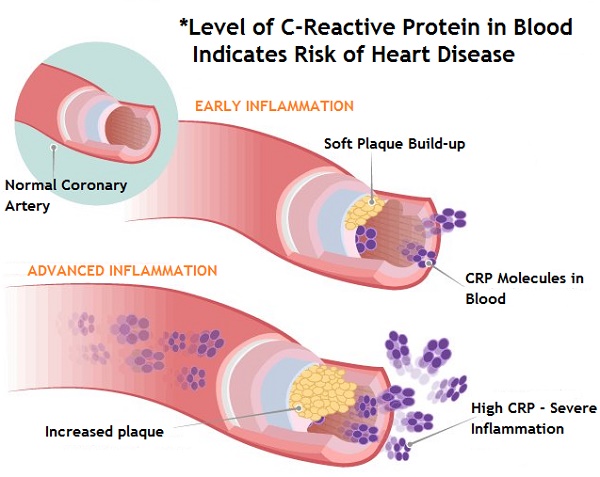
CRP is determined for pain in the joints, not associated with trauma, for the differential diagnosis of degenerative and inflammatory diseases – arthrosis and arthritis. In rheumatic diseases, CRP is examined to assess the activity of the process and monitor the effectiveness of treatment.
Preparing for the procedure
Donate blood preferably in the morning on an empty stomach, after an 8-14 hour break from eating. Do not drink juices, tea and coffee. Drinking water is allowed.
If necessary, CRP can be tested 4-6 hours after a light meal.
Physical activity should be avoided 2-3 days before the study.
Do not smoke for at least 30 minutes before blood sampling.
C-reactive protein (CRP, CRP)
C-reactive protein is an acute phase protein, a sensitive indicator of tissue damage during inflammation, necrosis, trauma.
Synonyms: Blood test for CRP; C-jet …
Up to 1 business day
Available with house call
665 RUB
Add to cart
Deadline
The analysis is carried out within one business day.
What can affect the results
A number of factors can influence the results of a study:
- Intense physical activity, which should be avoided 2-3 days before the test, as it can lead to damage to muscle tissue and, consequently, an increase in CRP. This is especially true for athletes and people who regularly visit gyms: any muscle injury leads to an increase in CRP levels.
- Non-steroidal anti-inflammatory drug (NSAID) painkillers and antipyretics may reduce actual CRP levels by reducing inflammation. There is evidence that statins used to lower blood cholesterol levels have a similar effect.
- The presence of implants and transplants in the body.
- Consumption of alcohol and/or fatty foods on the eve of the study.
C-reactive protein (CRP)
For research, blood is taken from a vein.
You can take a blood test for C-reactive protein (CRP, CRP) at the nearest INVITRO medical office. The list of offices where biomaterial is accepted for laboratory testing is presented in the “Addresses” section.
The interpretation of the results of the study contains information for the attending physician and is not a diagnosis. The information in this section should not be used for self-diagnosis or self-treatment. An accurate diagnosis is made by the doctor, using both the results of this examination and the necessary information from other sources: history, results of other examinations, etc.
Normal
Units of measurement: mg/l
A CRP level of less than 5 mg/l is considered normal.
When assessing cardiovascular risk, the level of highly sensitive CRP less than 1.0 mg / l is regarded as low, 1-3 mg / l as average, more than 3 mg / l indicates an increased risk of developing cardiovascular diseases in the future.
Explanation of indicators
The level of C-reactive protein in the blood does not depend on the gender and age of the patient, and its increase may be associated with damage to any organs and systems of the body of various nature. A specific diagnosis is established by a comprehensive assessment of complaints, examination data, instrumental and laboratory examination methods.
A specific diagnosis is established by a comprehensive assessment of complaints, examination data, instrumental and laboratory examination methods.
What do low readings mean
Since C-reactive protein is either absent in the blood of a healthy person, or is detected in minimal amounts, it is incorrect to talk about its decrease.
What do high rates mean
The degree of increase in C-reactive protein usually correlates with the volume, nature and severity of tissue damage.
An increase in CRP up to 30 mg/l can indicate viral diseases – SARS, rotavirus infection, etc., is found in malignant tumors, rheumatic diseases without an exacerbation stage (systemic lupus erythematosus, dermatomyositis, systemic scleroderma, rheumatoid arthritis, etc.).
An increase in CRP to 100 mg/l and above, as a rule, accompanies various acute bacterial infections (tonsillitis, pneumonia, appendicitis, acute cholecystitis, pyelonephritis, etc.), exacerbations of chronic infectious diseases and rheumatic diseases, as well as various tissue damage ( surgery, myocardial infarction, etc. ).
).
The most significant increase in CRP – up to 300 mg / l or more is possible with extensive burns and sepsis, when bacteria from the lesion enter the bloodstream and spread throughout the body.
Additional examination in case of deviation from the norm
An increase in body temperature in combination with an increase in the level of C-reactive protein can be accompanied by generalized (common) and any local lesions – infections of the skin and subcutaneous adipose tissue, respiratory and dental infections, infections of the eyes, ENT organs, gastrointestinal tract, cardiovascular system, urological infections, infections of the central nervous system, bones and joints.
Depending on the clinical picture, such patients are examined and treated by doctors of different specialties – general practitioners, surgeons, narrow specialists, including ENT specialists, dentists, gynecologists, urologists, rheumatologists.
As additional research in each case, you may need a wide range of instrumental and laboratory diagnostics.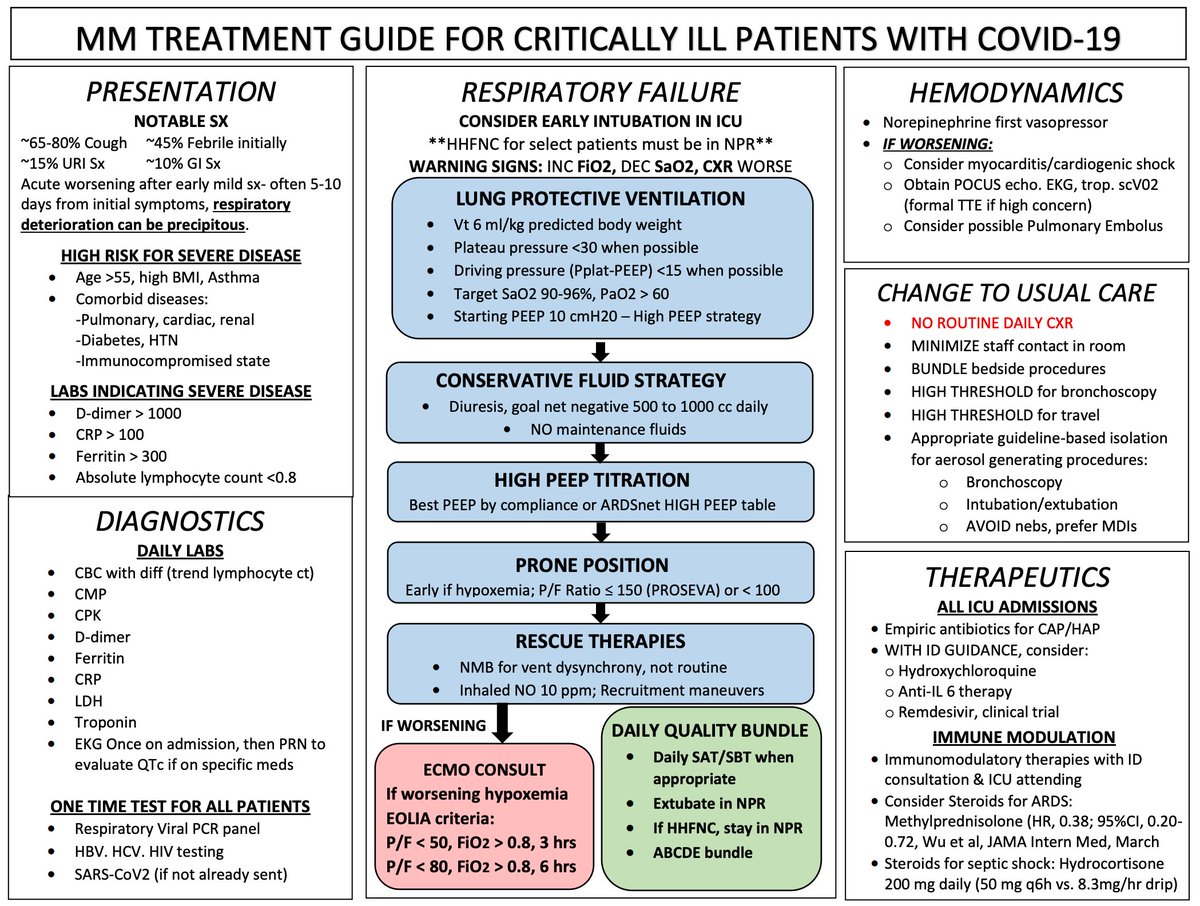
An increase in the level of highly sensitive CRP entails the identification of other risk factors for cardiovascular disease. For this, a blood test is performed for the lipid spectrum, fibrinogen, homocysteine, glucose, uric acid, as well as an ultrasound examination of the vessels of the neck and heart.
Sources
- Ershov A.V. C-reactive protein in the diagnosis of community-acquired pneumonia. Consilium Medicum, magazine. 2019, 21(3): 15-19 p.
- Khorolets E.V., et al. Diagnostic significance of C-reactive protein in the genesis of pathologies of the cardiovascular system. Journal of Fundamental Medicine and Biology. No. 1. 2013. S. 23-27.
IMPORTANT!
The information in this section should not be used for self-diagnosis or self-treatment. In case of pain or other exacerbation of the disease, only the attending physician should prescribe diagnostic tests. For diagnosis and proper treatment, you should contact your doctor.
For a correct assessment of the results of your analyzes in dynamics, it is preferable to do studies in the same laboratory, since different laboratories can use different research methods and units of measurement to perform the same analyzes.
Recommendations
PSA (prostate specific antigen) test
1140
may 13
Human papillomavirus
864
04 May
Alkaline phosphatase
1450
16 April
Show more
Similar articles
Hepatitis
Hepatitis C
IgM and IgG anti-HCV antibodies (anti-HCV total)
IgM and IgG anti-HCV antibodies (anti-HCV total) ): indications for prescribing , rules for preparing for the delivery of the analysis, decoding the results and indicators of the norm.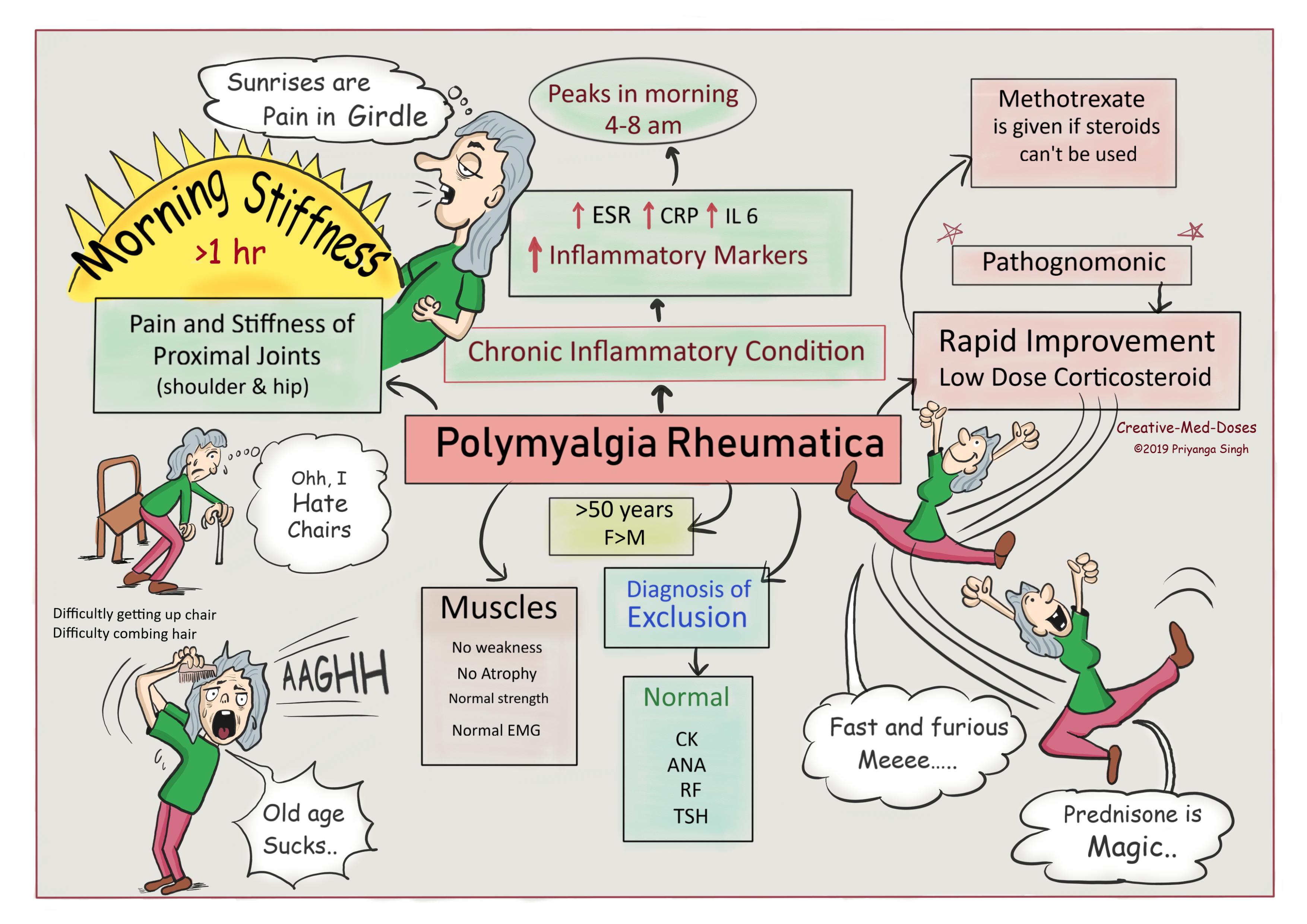
More
Hemorrhoids
Fungus
Diarrhea
Gastritis
Hepatitis
Coprogram: what is this study?
Coprogram, general analysis of feces: indications for the appointment, rules for preparing for the delivery of the analysis, interpretation of the results and indicators of the norm.
More
Thyrotoxicosis
Hepatitis
Diabetes mellitus
Glucose (in the blood) (Glucose)
Glucose (in the blood) (Glucose): indications for prescription, rules for preparing for the test, interpretation of the results and normal indicators.
More
Stroke
Gastritis
Hepatitis
Folic acid
Folic acid (vitamin B): indications for prescription, rules for preparing for the test, interpretation of the results and normal indicators.
More
Gout
Diabetes mellitus
Atherosclerosis
Uric acid (in the blood) (Uric acid)
Uric acid in the blood: indications for prescription, rules for preparing for the test, interpretation of the results and normal indicators.
More
Subscribe to our newsletters
Enter e-mail
I consent to
processing of personal data
Subscribe
What is C-reactive protein in the blood and how is its level related to health?
Contents
- 1 What is C-reactive protein in the blood and how is its level related to human health
- 1.
 1 What is C-reactive protein?
1 What is C-reactive protein? - 1.2 Related videos:
- 1.3 Description of properties of C-reactive protein
- 1.3.1 General information
- 1.3.2 Properties of
- 1.3.3 Diagnostic value
- 1.4 Where is CRP synthesized?
- 1.5 Q&A:
- 1.5.0.1 What is C-reactive protein?
- 1.5.0.2 What is the normal level of CRP in the blood?
- 1.5.0.3 Why do we need a CRP test?
- 1.5.0.4 What diseases can increase the level of CRP in the blood?
- 1.5.0.5 How to reduce the level of CRP in the blood?
- 1.5.0.6 Can CRP levels rise without disease?
- 1.6 How does the level of C-reactive protein in the blood change during inflammation?
- 1.7 C-reactive protein and cardiovascular disease studies
- 1.8 The role of C-reactive protein in the risk of heart disease
- 1.9 C-reactive protein measurements
- 1.10 Recommendations for measuring C-reactive protein in clinical practice
- 1.
 10.1 What is C-reactive protein?
10.1 What is C-reactive protein? - 1.10.2 Indications for CRP 9 analysis0006
- 1.10.3 Preparation for CRP analysis
- 1.10.4 Interpretation of results
- 1.10.5 Conclusion
- 1.
- 1.11 C-reactive protein and other diseases
- 1.11. 11.1 Role of C-reactive protein in the diagnosis of diseases
- 1.11 .2 Relationship between C-reactive protein and cardiovascular disease
- 1.11.3 C-reactive protein and other diseases
- 1.12 Role of C-reactive protein in cancer diagnosis
- 1.13 C-reactive protein and autoimmune diseases
- 1.14 Use of C-reactive protein in the diagnosis of infectious diseases
- 1.
C-reactive protein (CRP) is a protein produced in response to inflammation in the body. How and why is CRP analysis performed? What do the analysis results say and how to interpret them? What diseases can be detected by CRP analysis? Find out all about what information can be useful CRP analysis.
K-reactive protein (CRP) is a substance produced by the liver in response to inflammation in the body. Science has long explored the link between blood levels of CRP and various diseases. High levels of CRP may indicate the presence of inflammation in the body.
CRP can be a useful indicator of inflammation because its level can change very quickly. This means that CRP can be used to screen for diseases such as arthritis, cancer, cardiovascular disease, and others. In addition, CRP may help predict the risk of developing heart disease.
However, elevated CRP levels may not always be associated with disease. There are many factors that can cause a temporary increase in CRP levels, such as infections, trauma, and stress. Therefore, more research and risk factor-based data analysis is needed to more accurately determine disease risk.
In summary, CRP is an important indicator of health status and can help in the diagnosis and treatment of various diseases.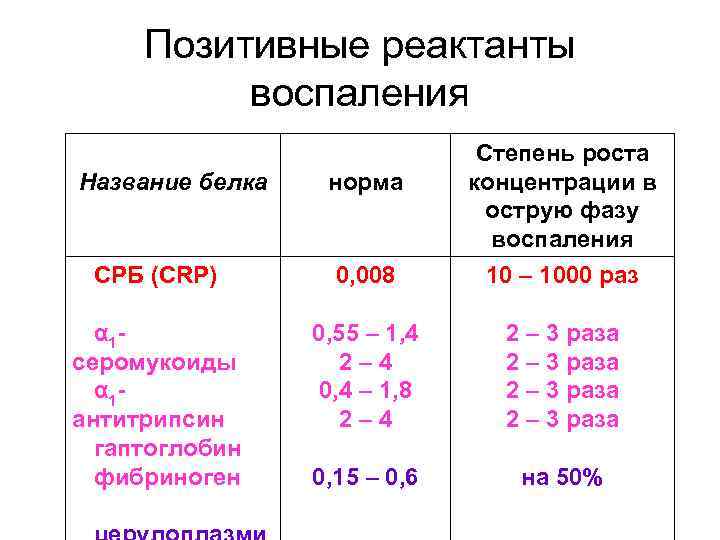 However, before making any decisions based on blood levels of CRP, a doctor should be consulted for more specific recommendations.
However, before making any decisions based on blood levels of CRP, a doctor should be consulted for more specific recommendations.
What is C-reactive protein?
C-reactive protein (CRP) is a protein produced by the liver in response to inflammation in the body. Its presence in the blood can be used as a marker to detect and monitor inflammation.
CRP is highly sensitive to small changes in the body. This allows you to use it not only to detect inflammation, but also to assess their severity and dynamics. What’s more, CRP levels can be a sign of other diseases such as infections, cancer, and cardiovascular disease.
However, C-reactive protein is not a specific marker, since its level can increase not only in case of inflammation, but also during stress, trauma and surgery. It also cannot be used to diagnose specific diseases.
- C-reactive protein is a protein produced by the liver in response to inflammation.
- CRP is used as a marker for inflammation detection and monitoring.

- It is highly sensitive but is not a specific marker.
- C-reactive protein levels can be a sign of infections, cancer, and cardiovascular disease.
Related videos:
Description of the properties of C-reactive protein
Once a year
66.67%
Once every six months
33.33%
Every 3 months
0%
General information
C-reactive protein (CRP) is a small protein that is produced in the liver and released into the blood in response to inflammation in the body. Its blood levels can change rapidly, which is why it is widely used to detect and monitor inflammatory processes such as infections or injuries.
Properties
CRP has a high level of specificity for inflammation, making it a useful indicator for determining the presence and extent of inflammation in the body. It is also relatively stable in the blood and easy to measure, making it a reliable test for diagnosing and monitoring inflammatory diseases.
It is also relatively stable in the blood and easy to measure, making it a reliable test for diagnosing and monitoring inflammatory diseases.
In addition, the level of CRP can change rapidly in response to changes in inflammatory processes and, therefore, can be used to evaluate the effectiveness of the treatment of inflammatory diseases.
Diagnostic value
A high level of CRP may indicate the presence of inflammatory processes in the body, such as infections, cancer, rheumatic diseases, and others. A low CRP level, on the contrary, usually indicates the absence of inflammatory processes.
Thus, CRP measurement can be a useful tool for diagnosing and monitoring inflammatory diseases, as well as for evaluating the effectiveness of treatment.
Where is C-reactive protein synthesized?
C-reactive protein (CRP) is a protein synthesized in the liver in response to inflammation in the body. While most proteins in the blood are synthesized in the tissues and organs they serve, CRP is only made in the liver.
When an inflammatory process occurs in the body, levels of cytokines increase in the blood, which affect the liver and cause the synthesis of CRP. The higher the level of inflammation, the more CRP is produced by the liver. After CRP is produced in the liver, it enters the bloodstream and can be detected in the patient’s blood.
C-reactive protein testing can be used to diagnose infectious and inflammatory diseases, to assess the risk of developing cardiovascular disease and to monitor the effectiveness of treatment.
Thus, CRP is one of the key biomarkers that help physicians determine whether inflammation is occurring in the body and how severe it is.
Q&A:
What is C-reactive protein?
C-reactive protein (CRP) is a protein produced by the liver in response to inflammation.
What is the normal level of CRP in the blood?
The normal level of CRP in the blood for a healthy person does not exceed 5 mg/l.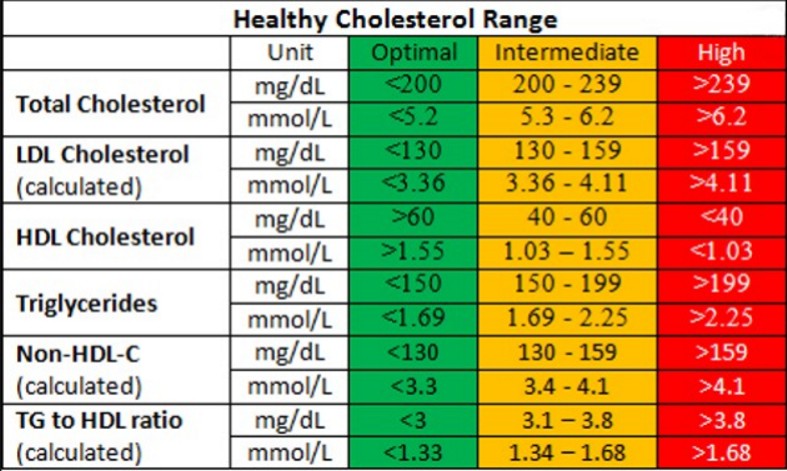
Why do you need a CRP test?
CRP analysis is needed to determine the presence of an inflammatory process in the body and control the dynamics of the disease.
What diseases can increase the level of CRP in the blood?
Blood levels of CRP may be elevated in rheumatoid arthritis, osteomyelitis, infectious diseases, cancer and other diseases.
How to reduce the level of CRP in the blood?
Blood levels of CRP can be reduced by treating the underlying disease, maintaining a healthy lifestyle, and taking anti-inflammatory drugs.
Can CRP levels rise without disease?
Yes, increased blood levels of CRP may be associated with age, smoking, obesity, stress, and other unrelated factors.
How does the level of C-reactive protein in the blood change during inflammation?
Inflammation is the body’s response to injury, infection, or other stimuli. The level of C-reactive protein (CRP) in the blood is one of the most sensitive indicators of inflammation.
Normal CRP levels are less than 10 mg/l. However, during the inflammatory process, the level of CRP can increase significantly. CRP levels may start to rise as early as a few hours after the onset of inflammation, peak after 24-48 hours, and remain elevated for days or weeks.
The level of CRP is increased not only in inflammatory diseases such as arthritis, bronchitis, pneumonia, but also in cardiovascular diseases and cancer. There is a link between long-term elevated CRP levels and the risk of developing cardiovascular disease, stroke, and even dementia.
- Elevated CRP levels are a reliable indicator of an inflammatory process in the body.
- CRP levels may begin to rise as early as a few hours after the onset of inflammation.
- CRP levels are increased in inflammatory diseases, cardiovascular disease and cancer.
- Long-term elevated CRP levels are associated with an increased risk of cardiovascular disease, stroke and dementia.

Studies linking C-reactive protein to cardiovascular disease
There are many studies that seek to determine the relationship between blood levels of C-reactive protein and various cardiovascular diseases.
One such study was conducted on a large group of patients diagnosed with coronary disease. The results showed that CRP levels were significantly higher in patients with severe disease compared to those with milder disease.
Another study found an association between high levels of C-reactive protein and the development of atherosclerosis. Patients with high protein levels had thicker artery walls and more sclerotic plaques, which increased the risk of cardiovascular disease.
Thus, the study of the level of C-reactive protein in the blood can help in the diagnosis of cardiovascular disease and decision on therapy. However, these studies cannot be used as the only diagnostic criterion, and require additional examinations and consultations with a specialist.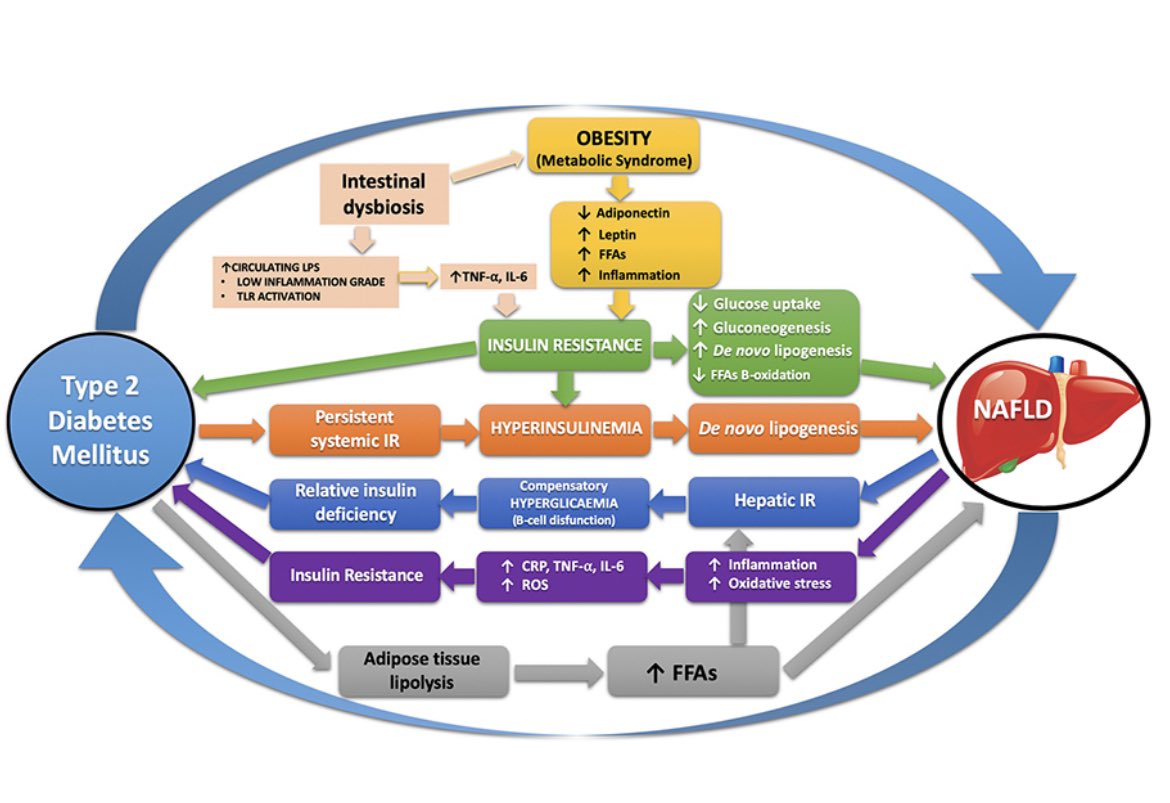
The role of C-reactive protein in the risk of heart disease
C-reactive protein (CRP) is a protein that is synthesized in the liver in response to inflammation in the body. The level of CRP in the blood increases during the acute phase of infectious diseases and other inflammatory conditions.
However, CRP may also be associated with a high risk of cardiovascular disease. Studies show that blood levels of CRP are associated with the risk of myocardial infarction and stroke.
High levels of CRP may indicate a hidden inflammatory process in the body, which in turn may contribute to the development of atherosclerosis, a disease characterized by the formation of plaque on the walls of blood vessels and an increased risk of heart attacks and strokes.
Therefore, the determination of CRP levels in the blood can be an important indicator of the risk of cardiovascular disease and help in the early detection of these diseases.
Methods for measuring C-reactive protein
There are various methods based on different principles for measuring C-reactive protein in blood.
- The immunoturbidimetric method is based on an agglutination reaction resulting in a change in light scattering.
- The enzyme-linked immunosorbent assay is based on a specific binding between an antibody and an antigen that changes color or light emission.
- Latex agglutination method is based on the ability of latex particles coated with an antibody to form agglutinates when bound to an antigen.
All of these methods allow you to determine the amount of C-reactive protein in the blood and are used to diagnose inflammation and other diseases.
Examples of commercial blood C-reactive protein kits0523
protein in clinical practice
What is C-reactive protein?
C-reactive protein (CRP) is a protein found in the blood that is produced by the liver in response to inflammation in the body. It is an indicator used in medicine to determine the presence of inflammatory processes such as infections or autoimmune diseases.
It is an indicator used in medicine to determine the presence of inflammatory processes such as infections or autoimmune diseases.
Indications for CRP testing
CRP testing is usually recommended when symptoms of inflammation such as fever, pain, swelling and redness are present. It may also be useful for monitoring the effectiveness of anti-inflammatory drug treatment and monitoring drug tolerance, as an elevated CRP may be an indication of treatment failure or drug tolerability problems.
CRP Assay Preparation
- 8-12 hours of fasting should be allowed prior to assay to avoid false positives.
- Physical exercise is not recommended before the test.
- Tell your doctor about all medications you are taking, as some medications can affect your CRP.
Interpretation of results
Normal blood CRP is less than 10 mg/l. If the CRP level exceeds 10 mg / l, this may be an indication of the presence of inflammatory processes in the body.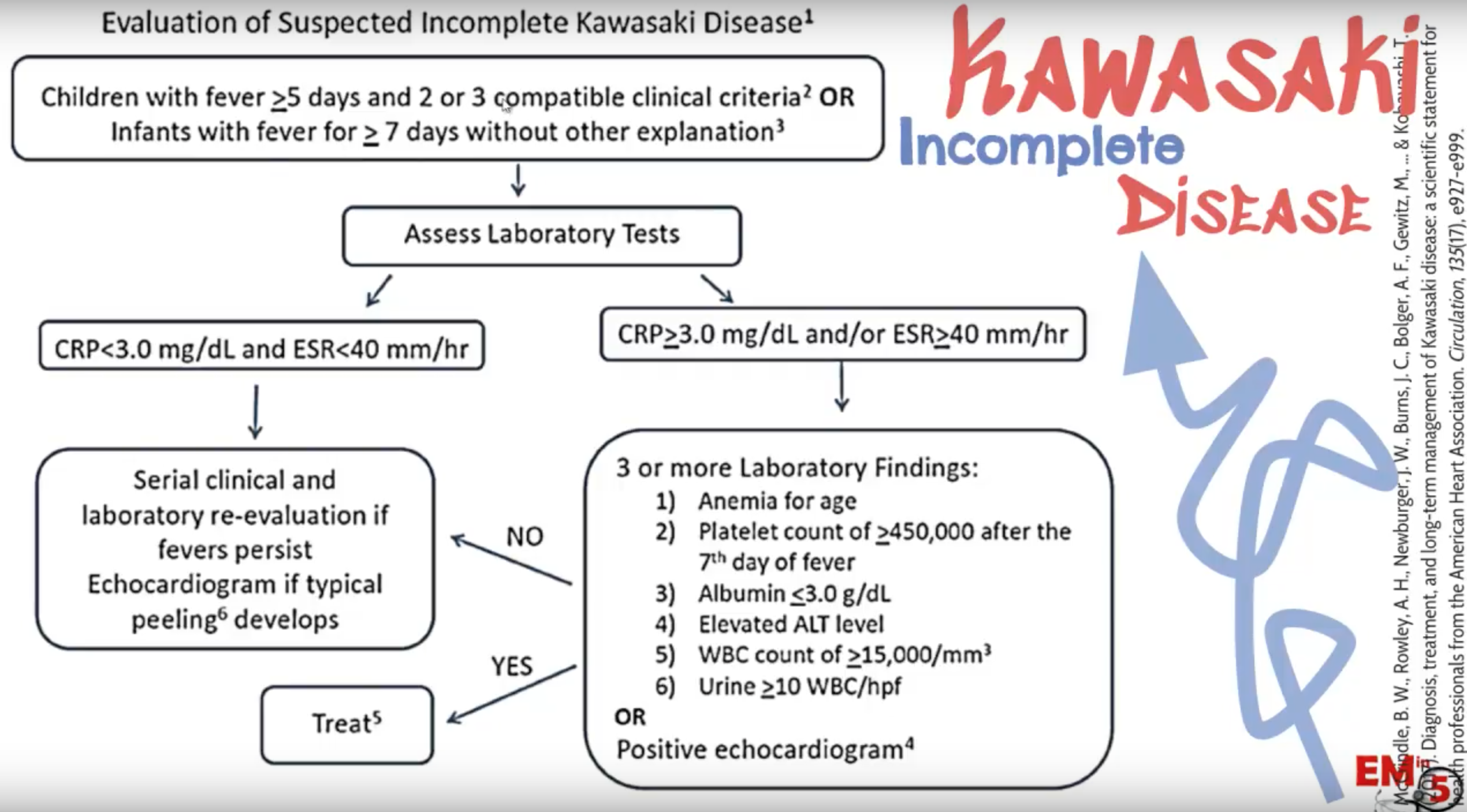 However, an elevated CRP level is not always an indicator of a disease state, as it can also be caused by physiological causes such as pregnancy or alcohol consumption.
However, an elevated CRP level is not always an indicator of a disease state, as it can also be caused by physiological causes such as pregnancy or alcohol consumption.
Conclusion
CRP study can be useful for monitoring inflammatory processes in the body and the effectiveness of treatment. With an increased level of CRP, it is necessary to consult a doctor to identify the cause of the deviation.
C-reactive protein and other diseases
The role of C-reactive protein in the diagnosis of diseases
C-reactive protein (CRP) is one of the most widely used biomarkers in medicine. It is produced by the liver and is released in large quantities during an inflammatory response in the body.
So, in infectious diseases, inflammatory diseases of the joints, cancer, autoimmune diseases, the level of CRP in the blood increases significantly. Therefore, determining the level of C-reactive protein is an important and quite often used method for diagnosing various diseases.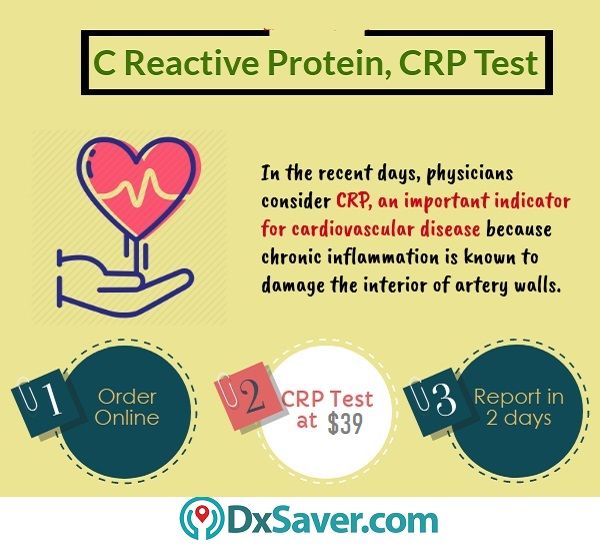
Relationship between C-reactive protein and cardiovascular disease
The level of CRP can serve as an indicator of the risk of developing cardiovascular disease. High levels of C-reactive protein are associated with an increased risk of stroke, myocardial infarction, peripheral arterial disease, and other cardiovascular complications.
- Some studies suggest that blood levels of CRP can be used to predict the risk of cardiovascular disease.
- However, it should be borne in mind that an elevated level of C-reactive protein does not indicate the presence of cardiovascular disease and is not an accurate diagnostic sign.
C-reactive protein and other diseases
Elevated levels of C-reactive protein are also observed in patients with diabetes, obesity, atherosclerosis, Crohn’s disease, ulcerative colitis and other diseases.
In general, the level of CRP can be increased in various situations related to the body and its response to stress and various stimuli.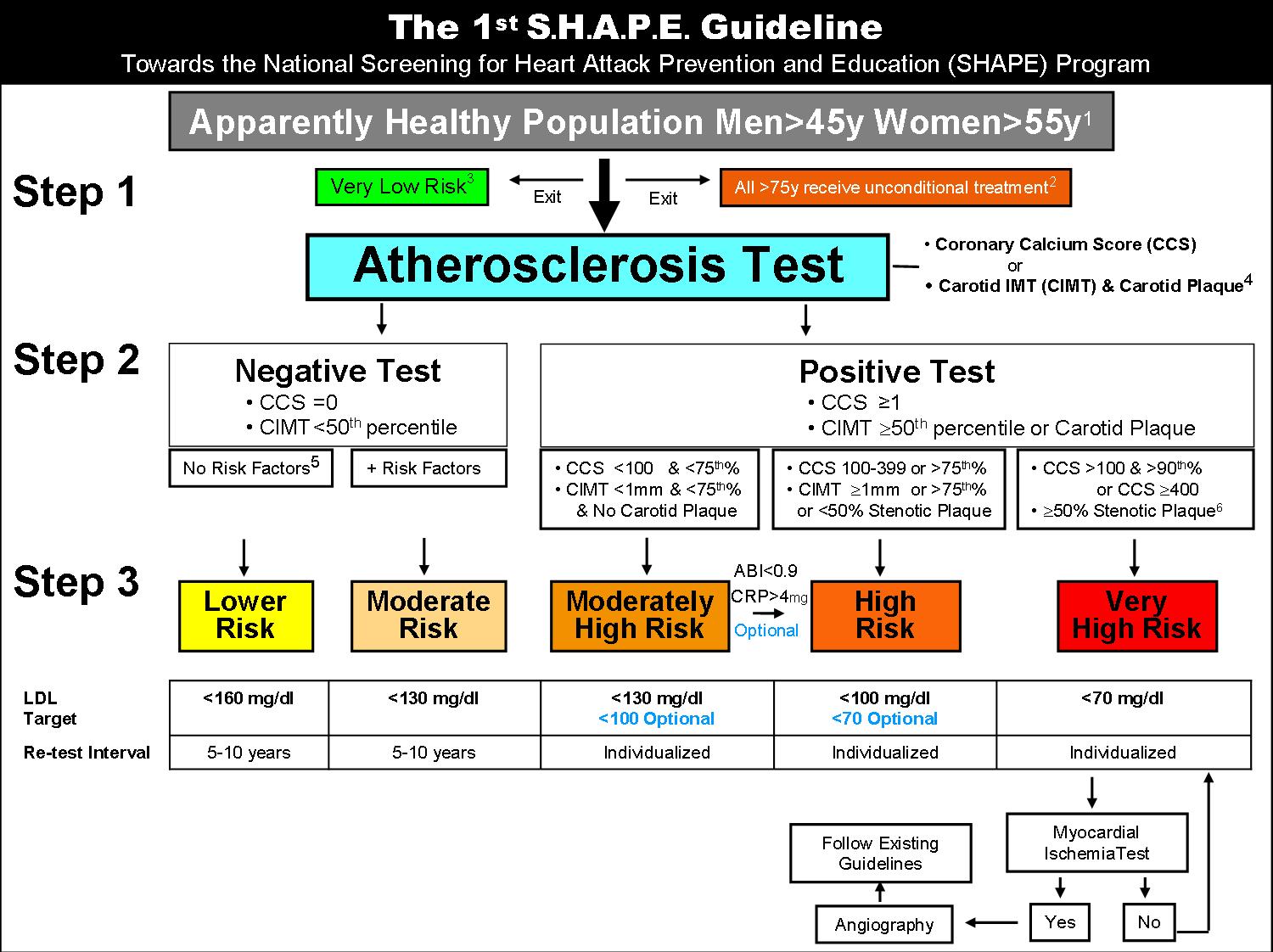 However, the determination of this biomarker remains an important method for diagnosing and monitoring the course of various diseases.
However, the determination of this biomarker remains an important method for diagnosing and monitoring the course of various diseases.
The role of C-reactive protein in the diagnosis of oncology
C-reactive protein (CRP) is an important indicator in the diagnosis of various diseases, including cancer. It is produced by the liver in response to inflammation and can be measured in the blood with a simple test.
High levels of CRP may indicate the presence of a tumor in the body. However, it must be taken into account that increased values may also be associated with other diseases such as arthritis or infections.
Comprehensive tests are used to accurately diagnose oncology, including measurements of various proteins in the blood. In addition to CRP, proteins such as alpha-fetoprotein, carcinoembryonic antigen, and prostate antigen can be used as tumor markers.
It should be noted that a high level of C-reactive protein is not a specific proof of the presence of oncology. When suspicious data are identified, additional research methods are needed, such as biopsy and computed tomography. Only an integrated approach allows you to accurately diagnose a tumor and take the necessary measures for treatment.
When suspicious data are identified, additional research methods are needed, such as biopsy and computed tomography. Only an integrated approach allows you to accurately diagnose a tumor and take the necessary measures for treatment.
C-reactive protein and autoimmune diseases
C-reactive protein (CRP) is a protein produced by the liver in response to inflammation in the body. CRP levels in the blood can increase significantly in a variety of diseases, including infections, tumors, and autoimmune diseases.
Autoimmune diseases are diseases in which the immune system attacks the body’s own tissues and cells. This can lead to inflammation and damage to organs and tissues. Many autoimmune diseases are accompanied by an increase in the level of CRP in the blood.
Such diseases include, for example, rheumatoid arthritis, systemic lupus erythematosus, scleroderma, Crohn’s disease, ulcerative colitis. In these diseases, the immune system attacks the connective tissue, joints, intestines, and other organs, resulting in inflammation and pain.
Increased CRP levels can be used to diagnose and control these diseases. However, CRP levels can be elevated not only in autoimmune diseases, but also in other conditions such as heart disease, infections, and injuries. Therefore, the diagnosis is always established in a complex manner. In addition, the level of CRP may vary depending on the individual characteristics of the patient and his general condition.
Despite some limitations, CRP measurement is an important tool for diagnosing and treating autoimmune diseases. The level of this protein can be used to monitor the effectiveness of treatment and adjust the dosage of drugs.
Use of C-reactive protein in the diagnosis of infectious diseases
C-reactive protein (CRP) is one of the most sensitive indicators of inflammation in the blood and can be used to diagnose infectious diseases. It is produced by the liver in response to inflammatory cytokines, and blood levels of CRP rise rapidly in the event of infection or injury.

 1 What is C-reactive protein?
1 What is C-reactive protein? 10.1 What is C-reactive protein?
10.1 What is C-reactive protein?
